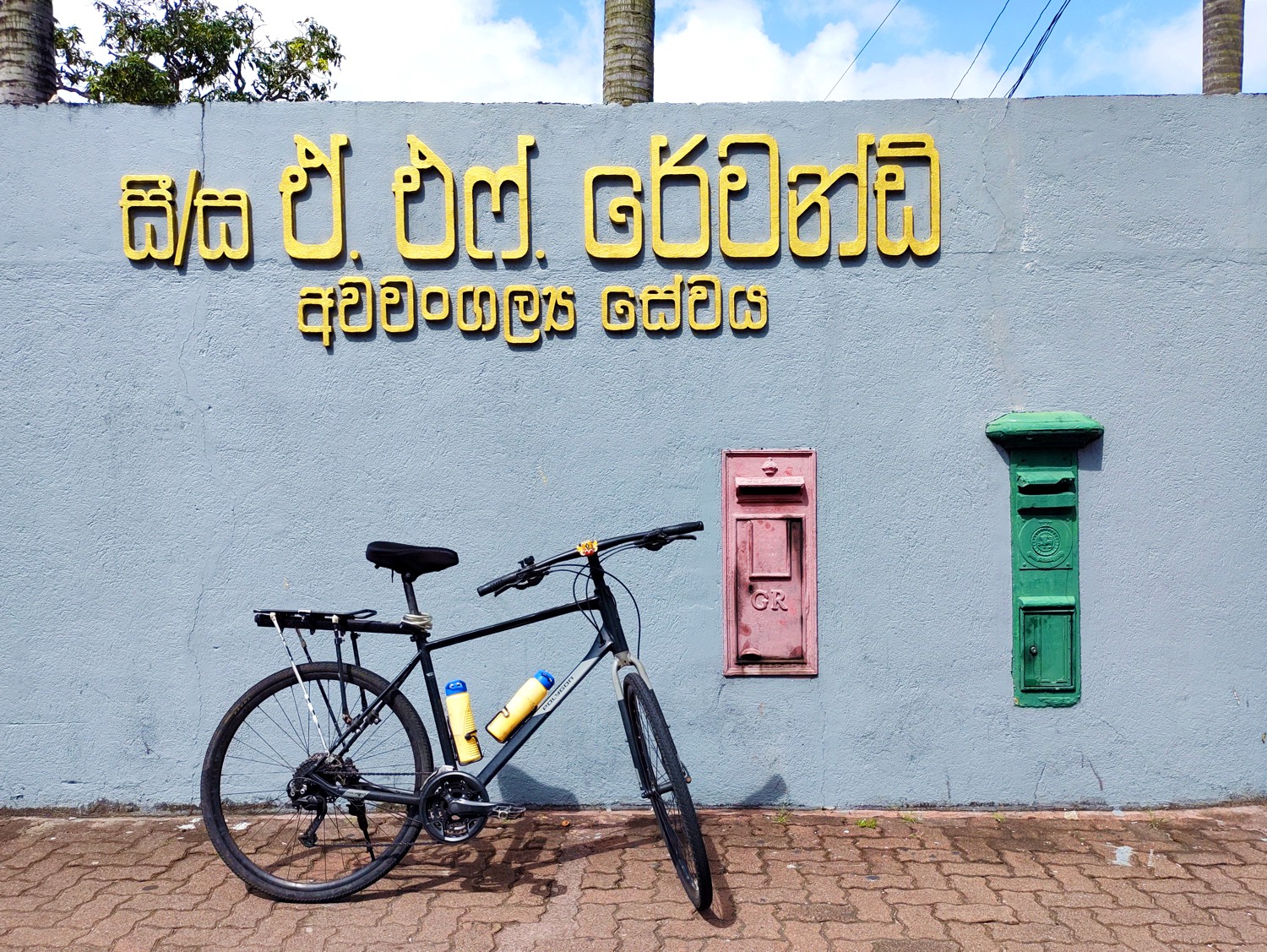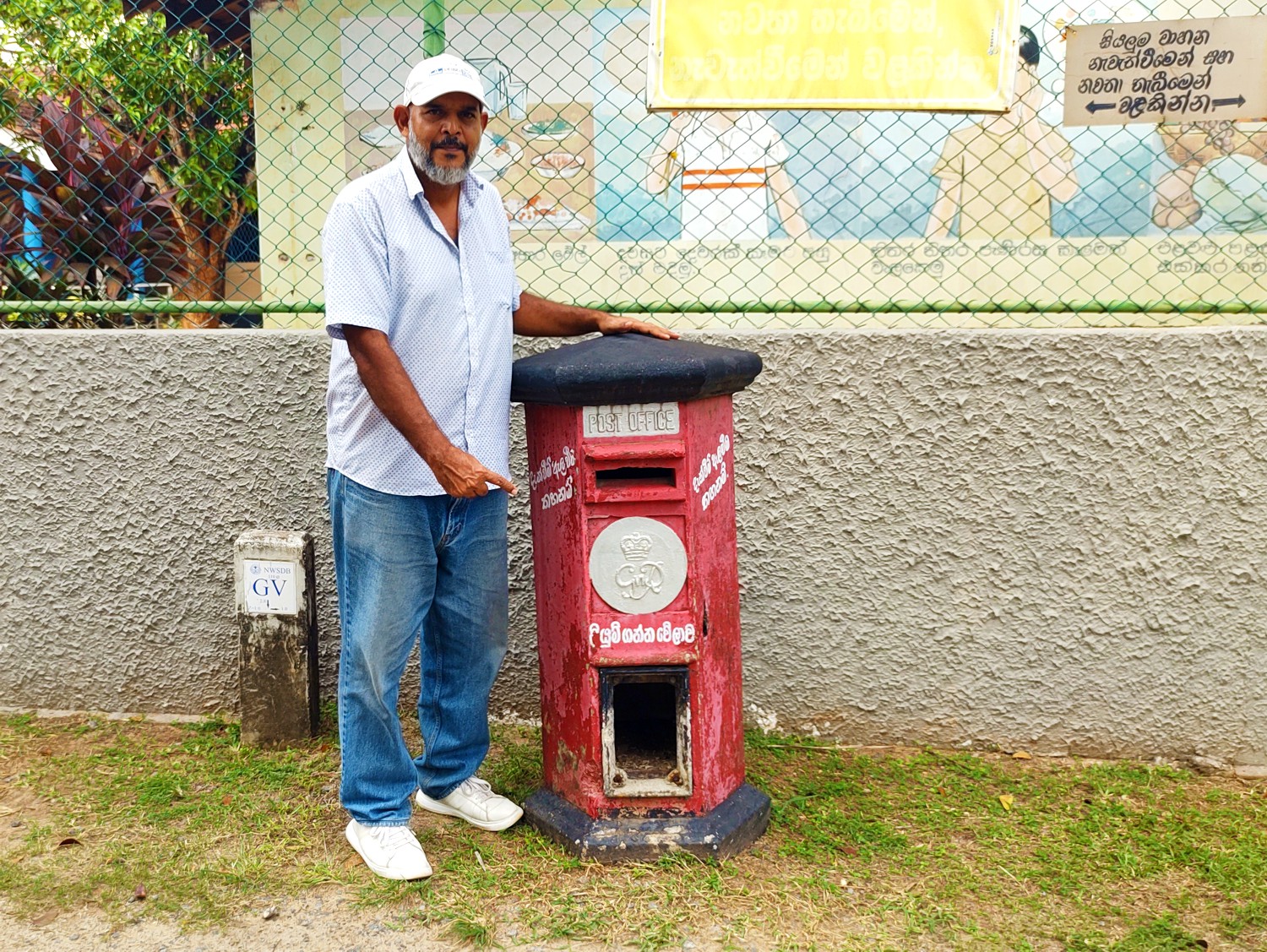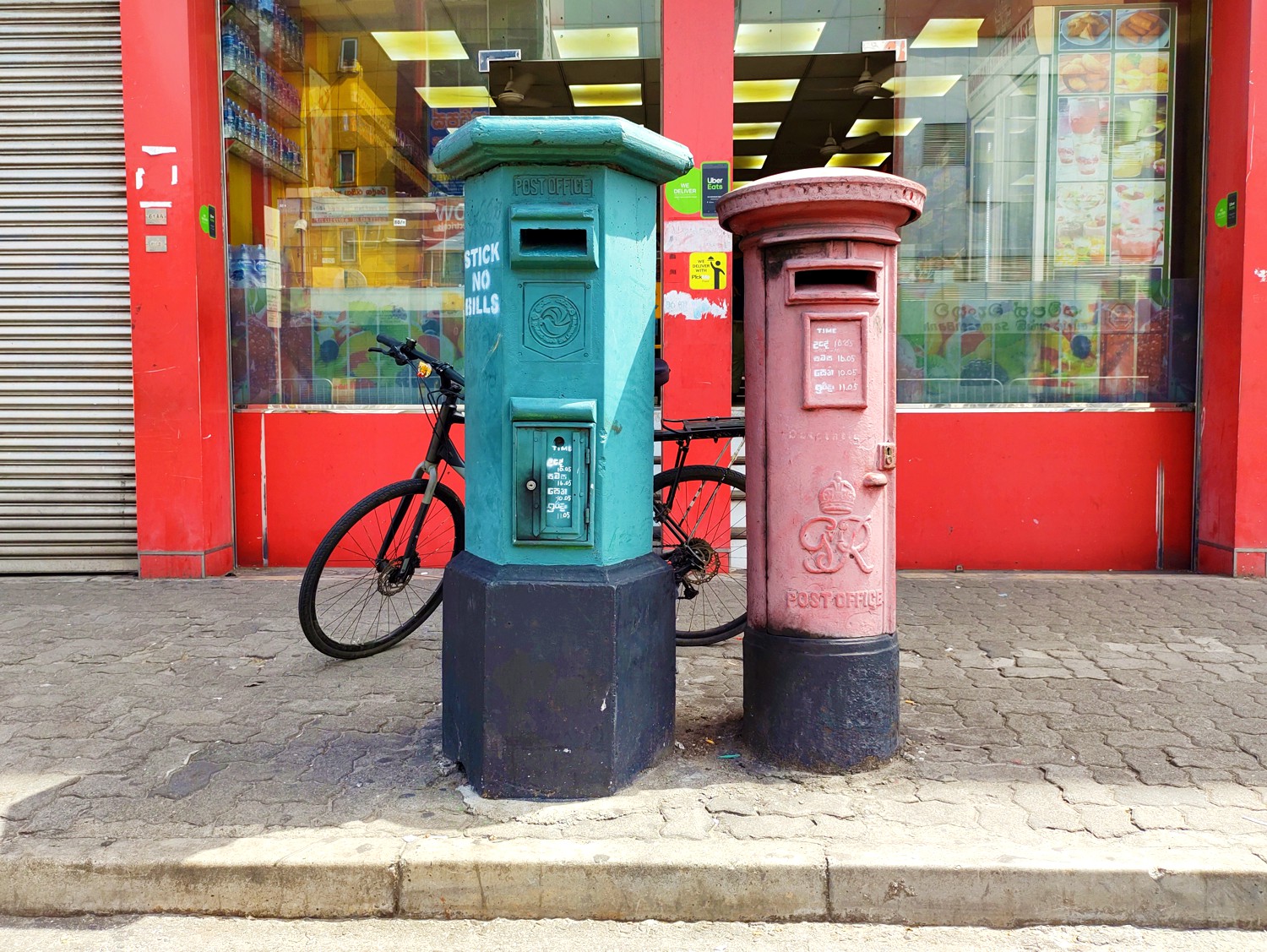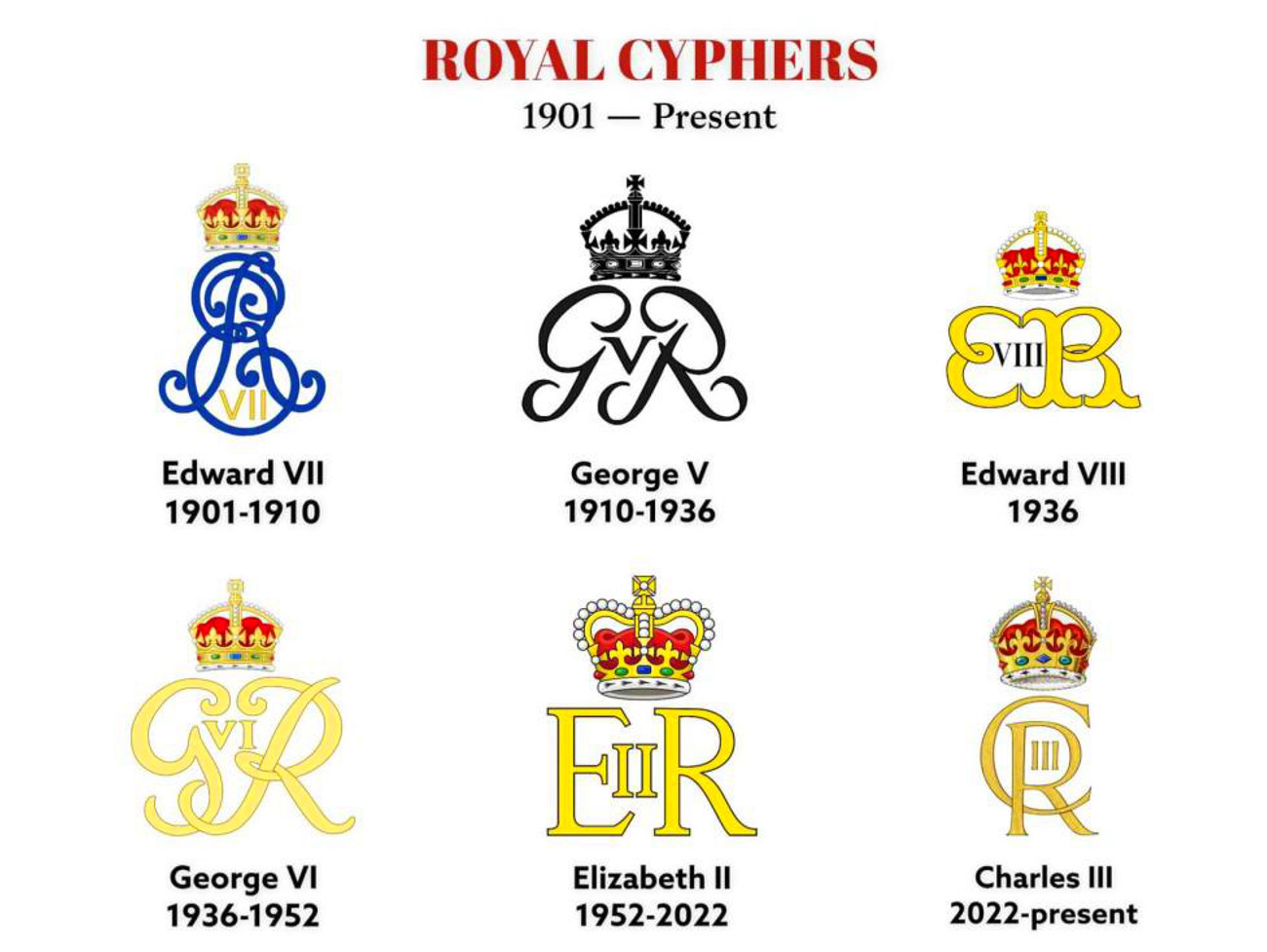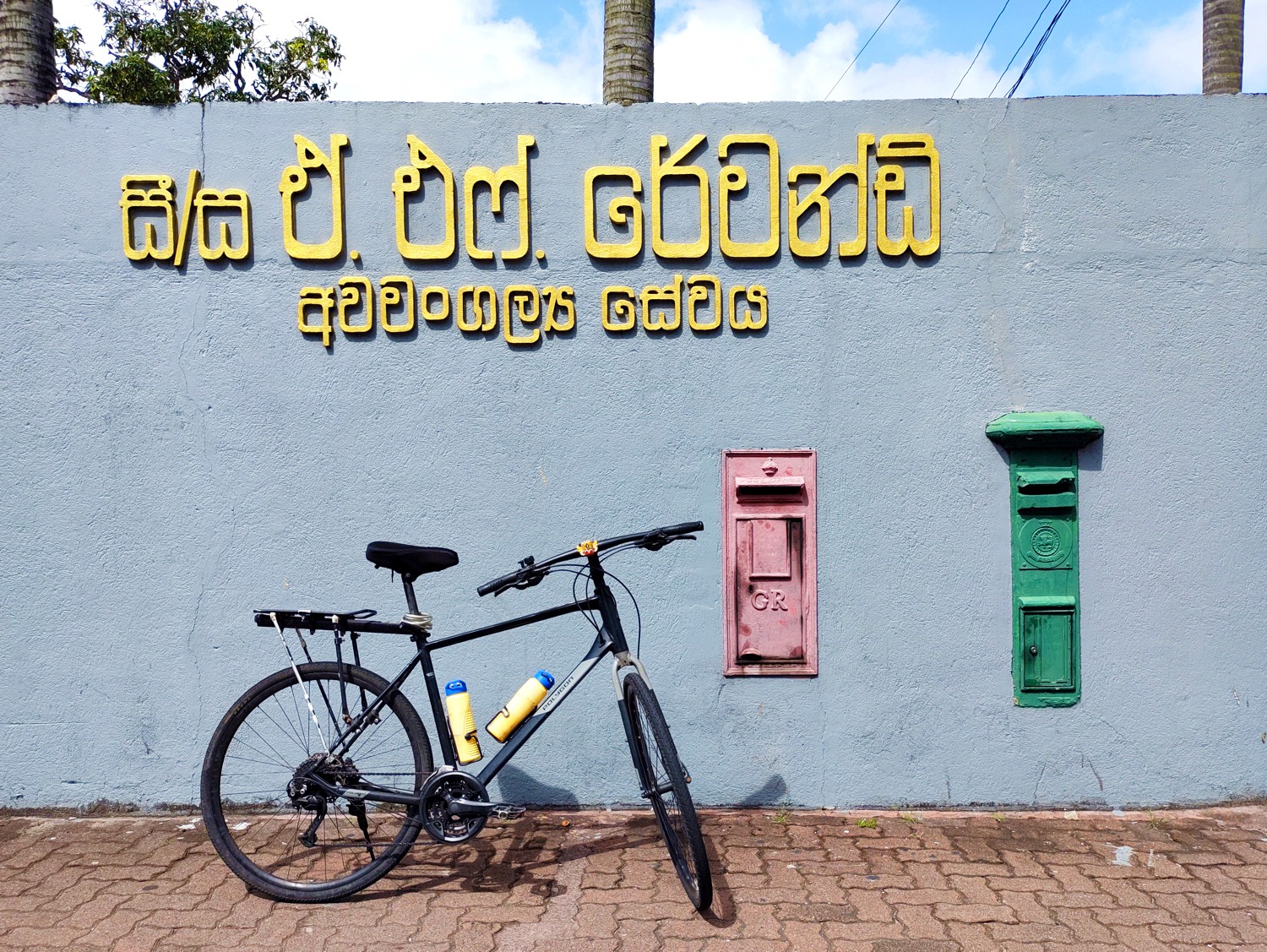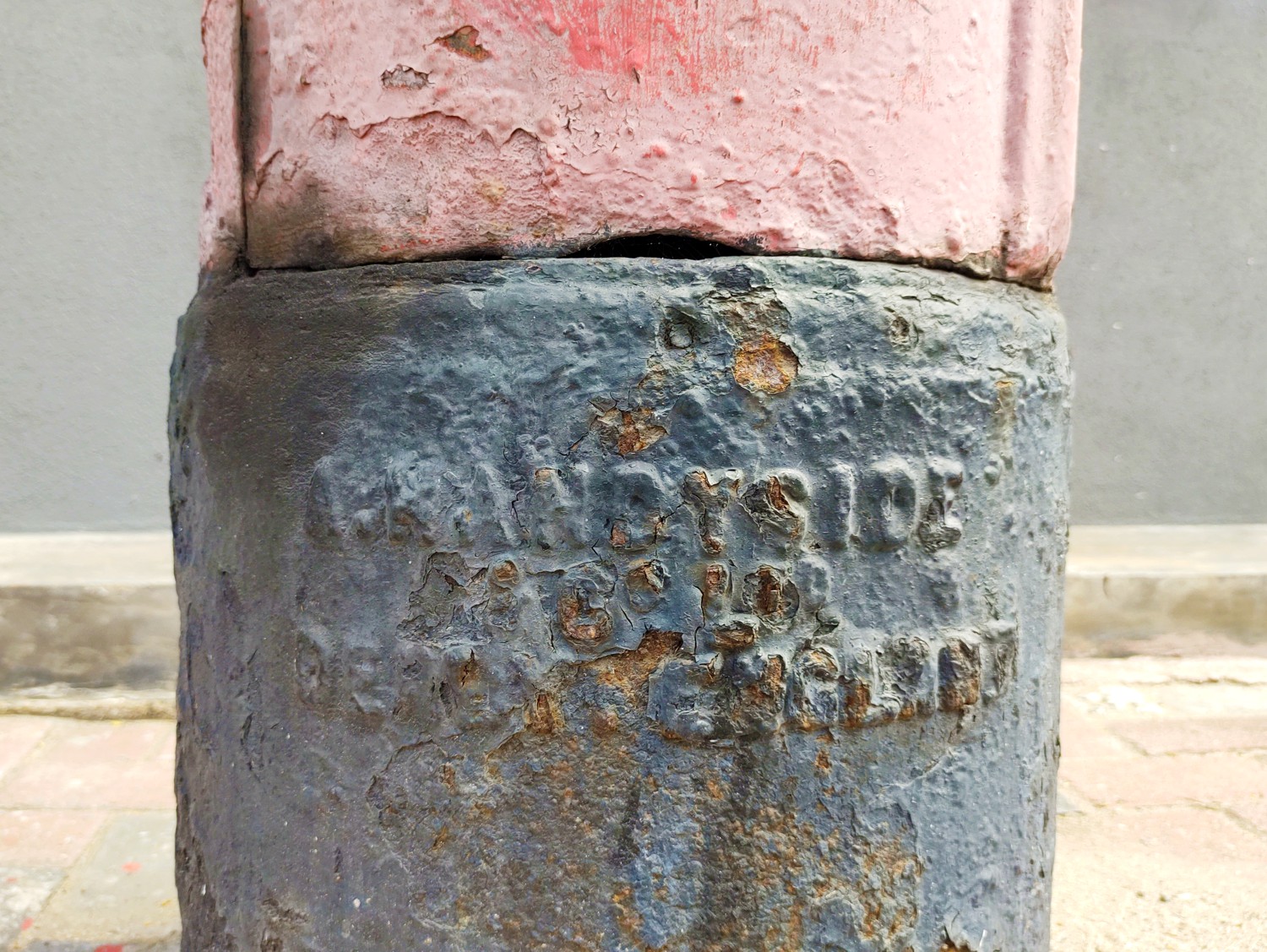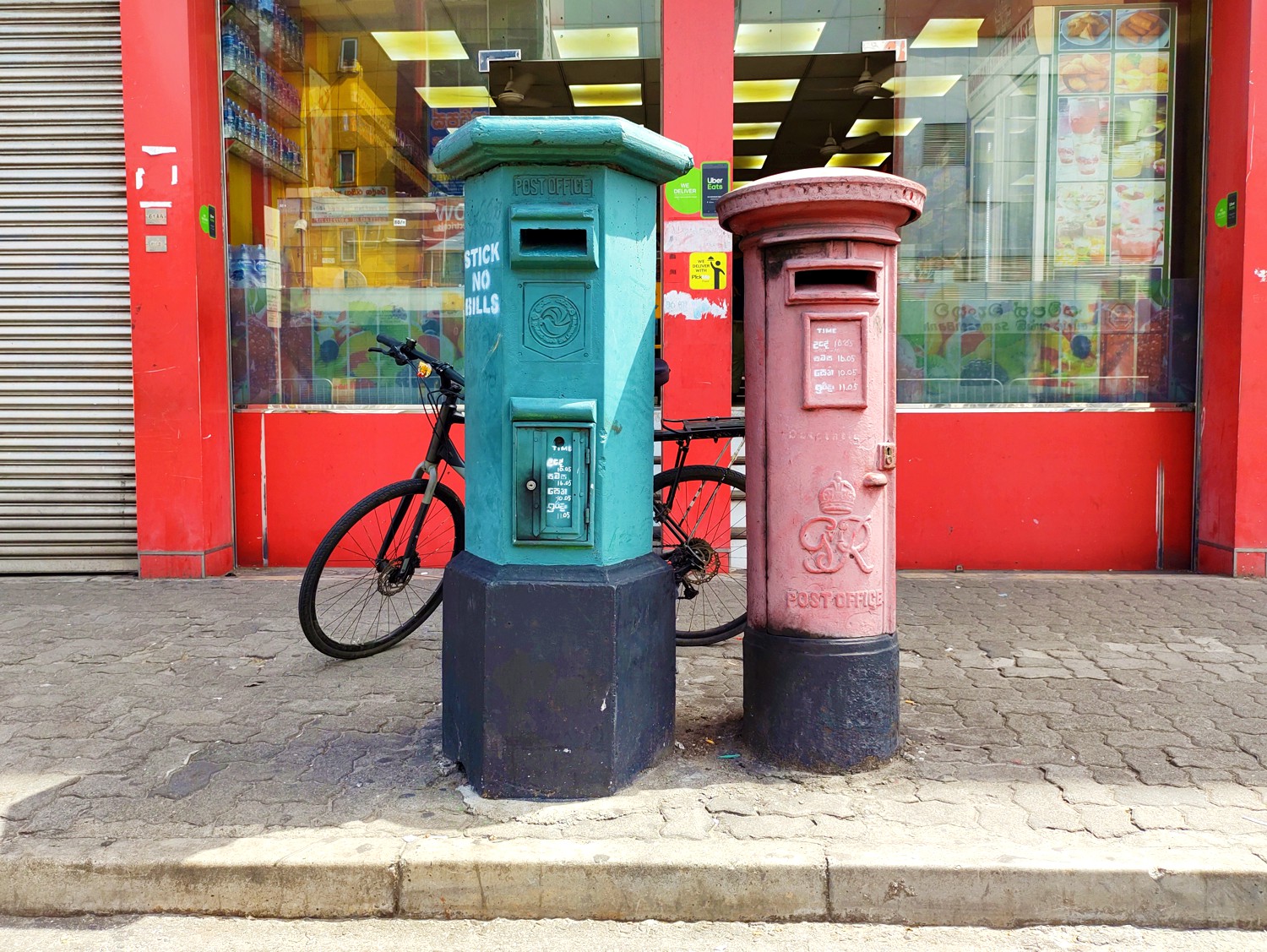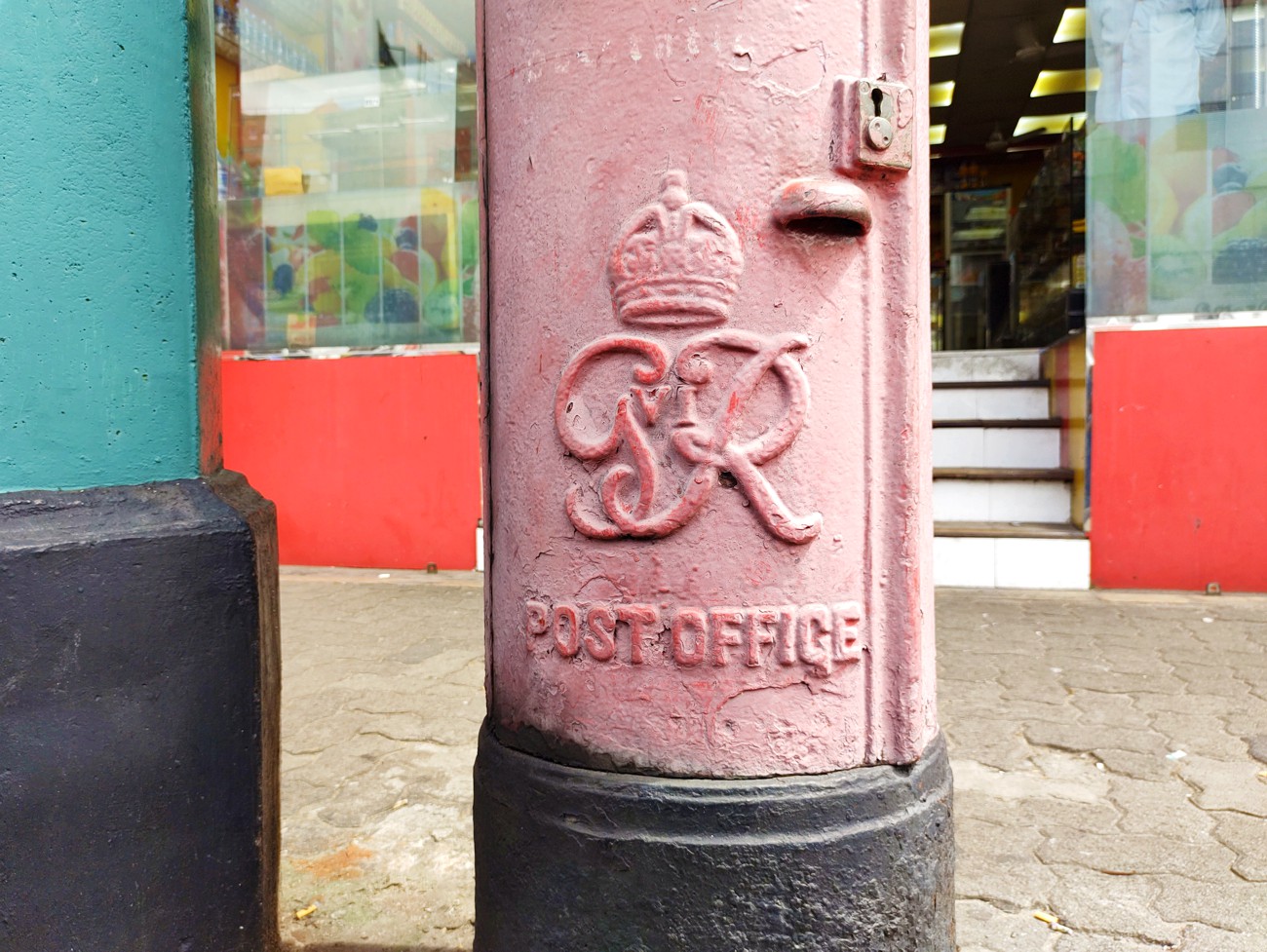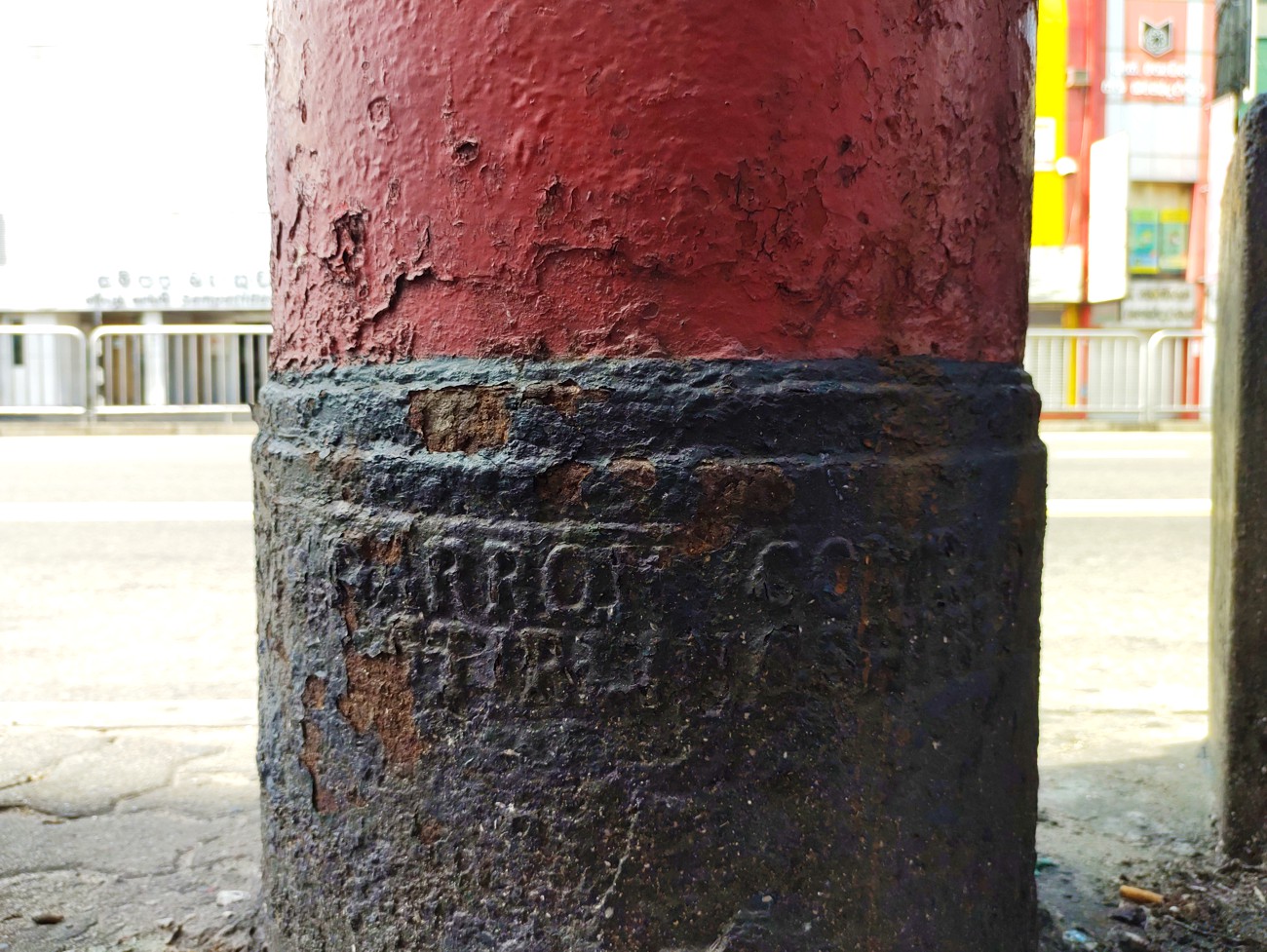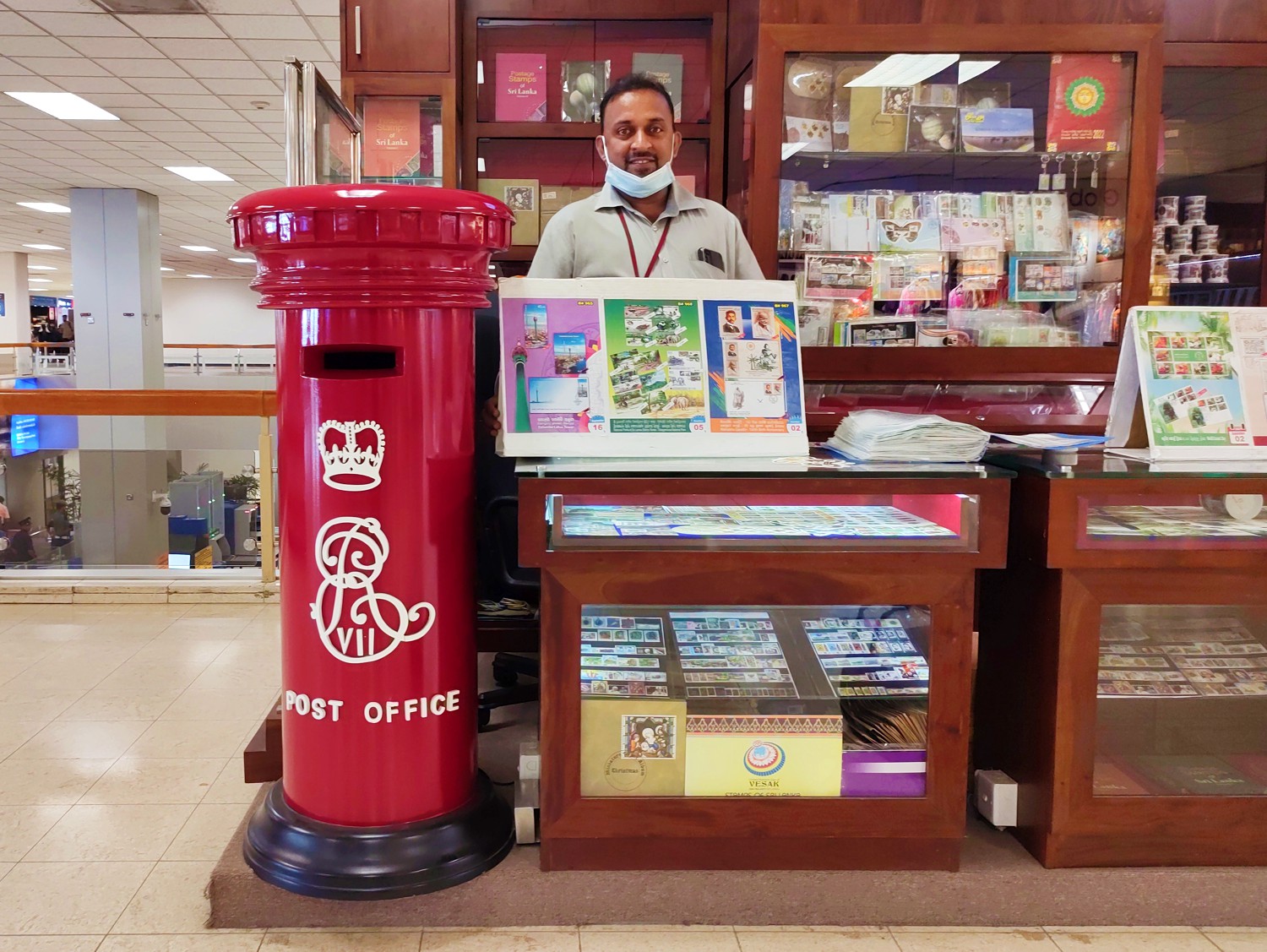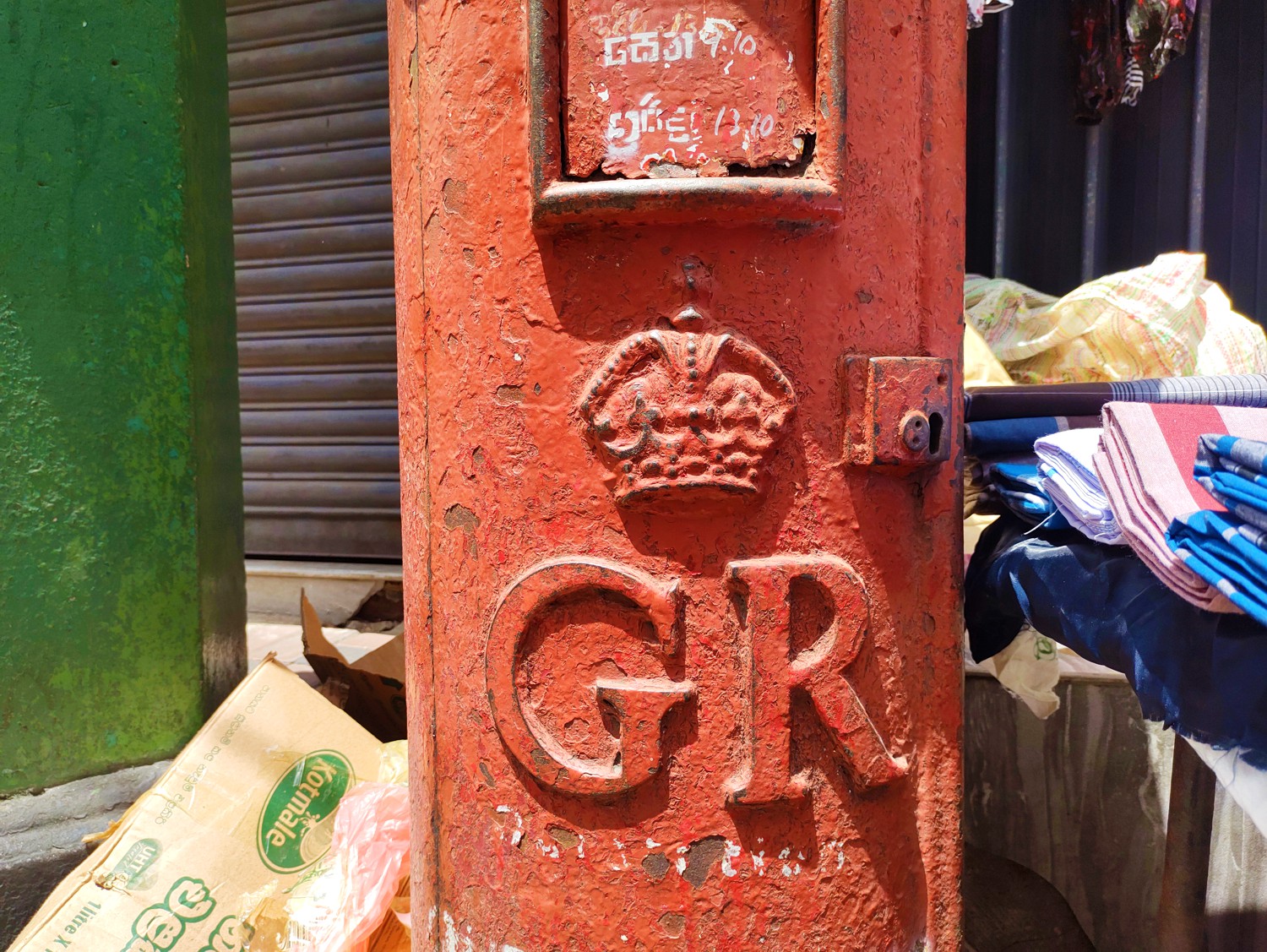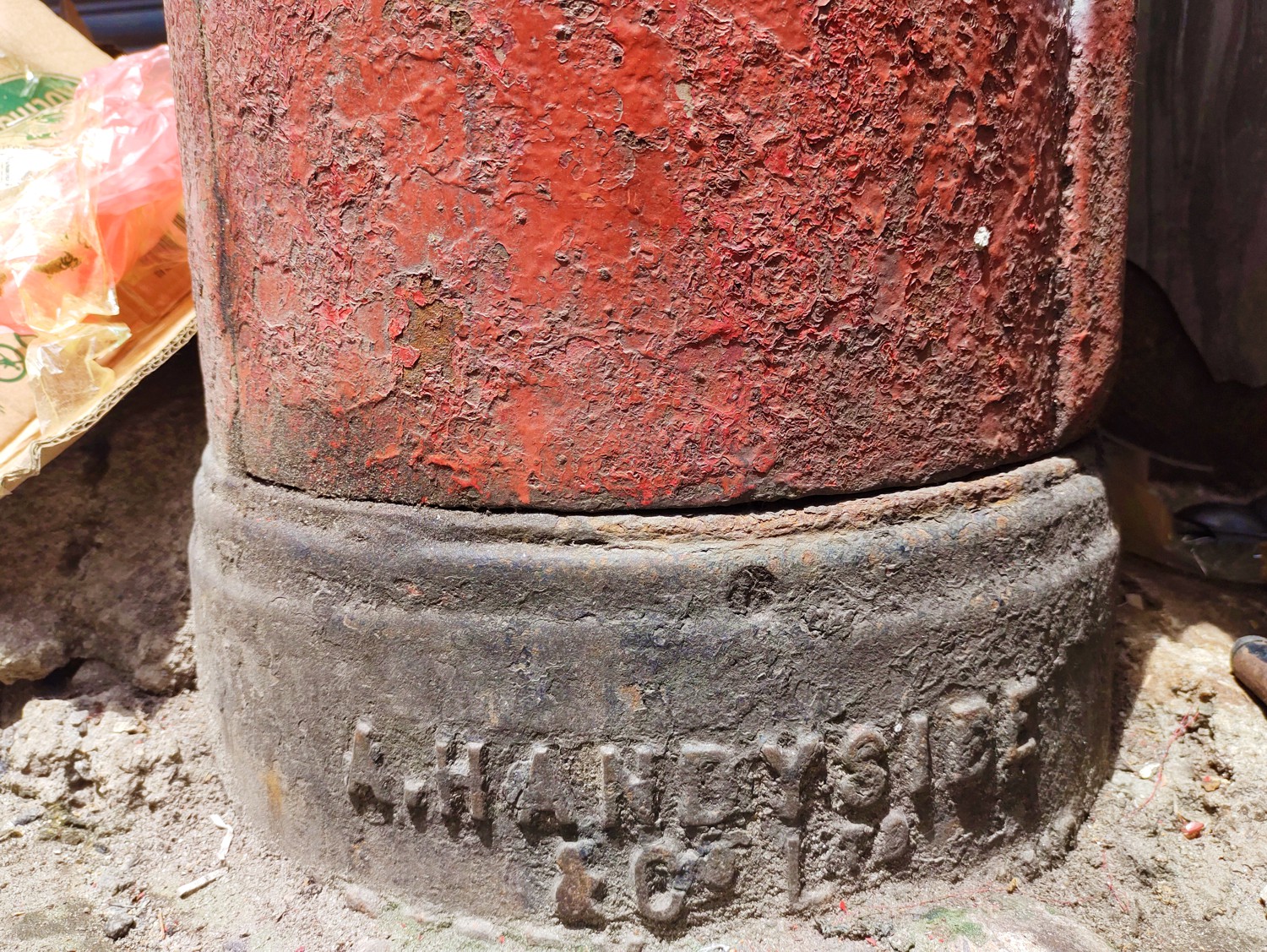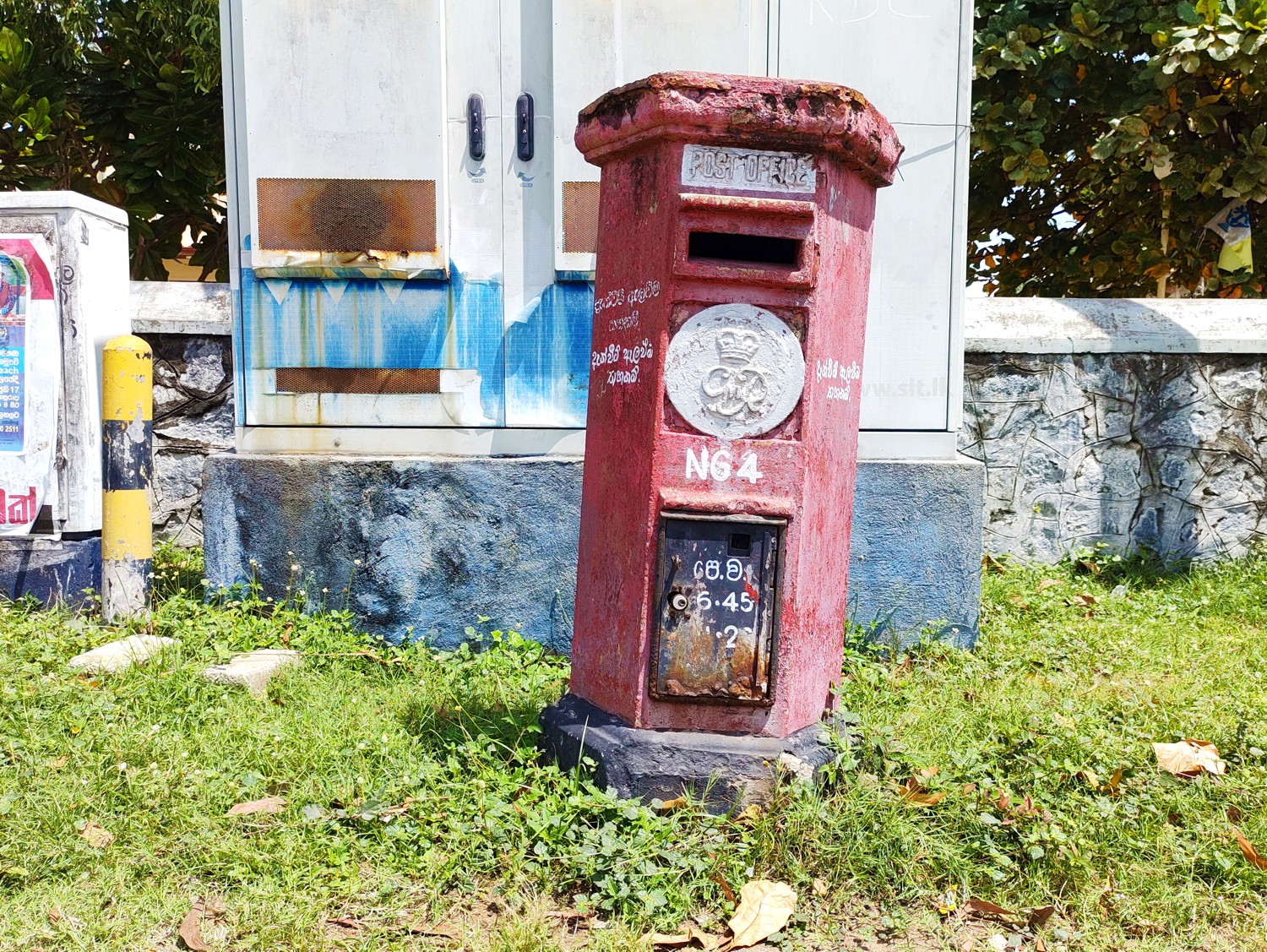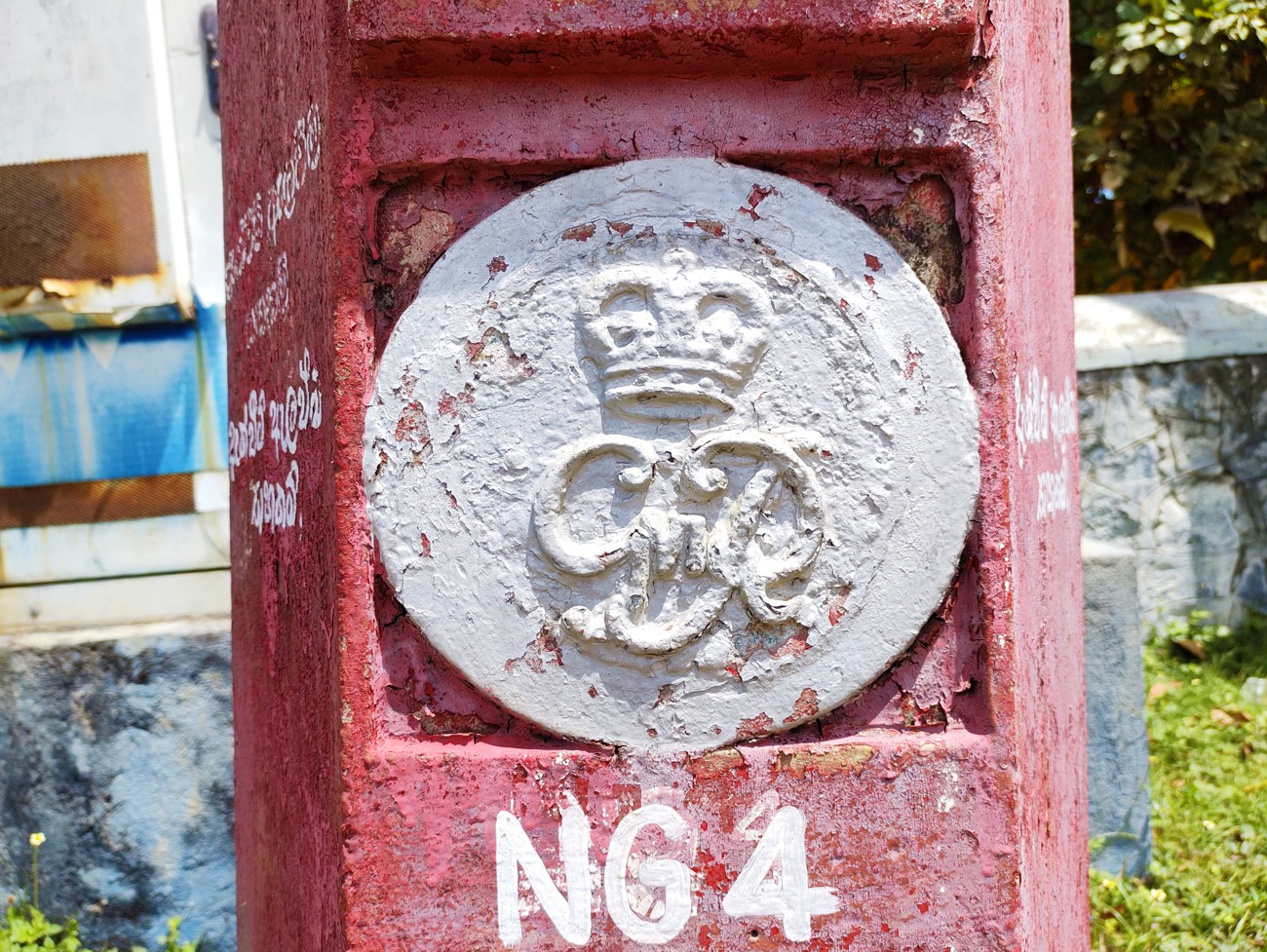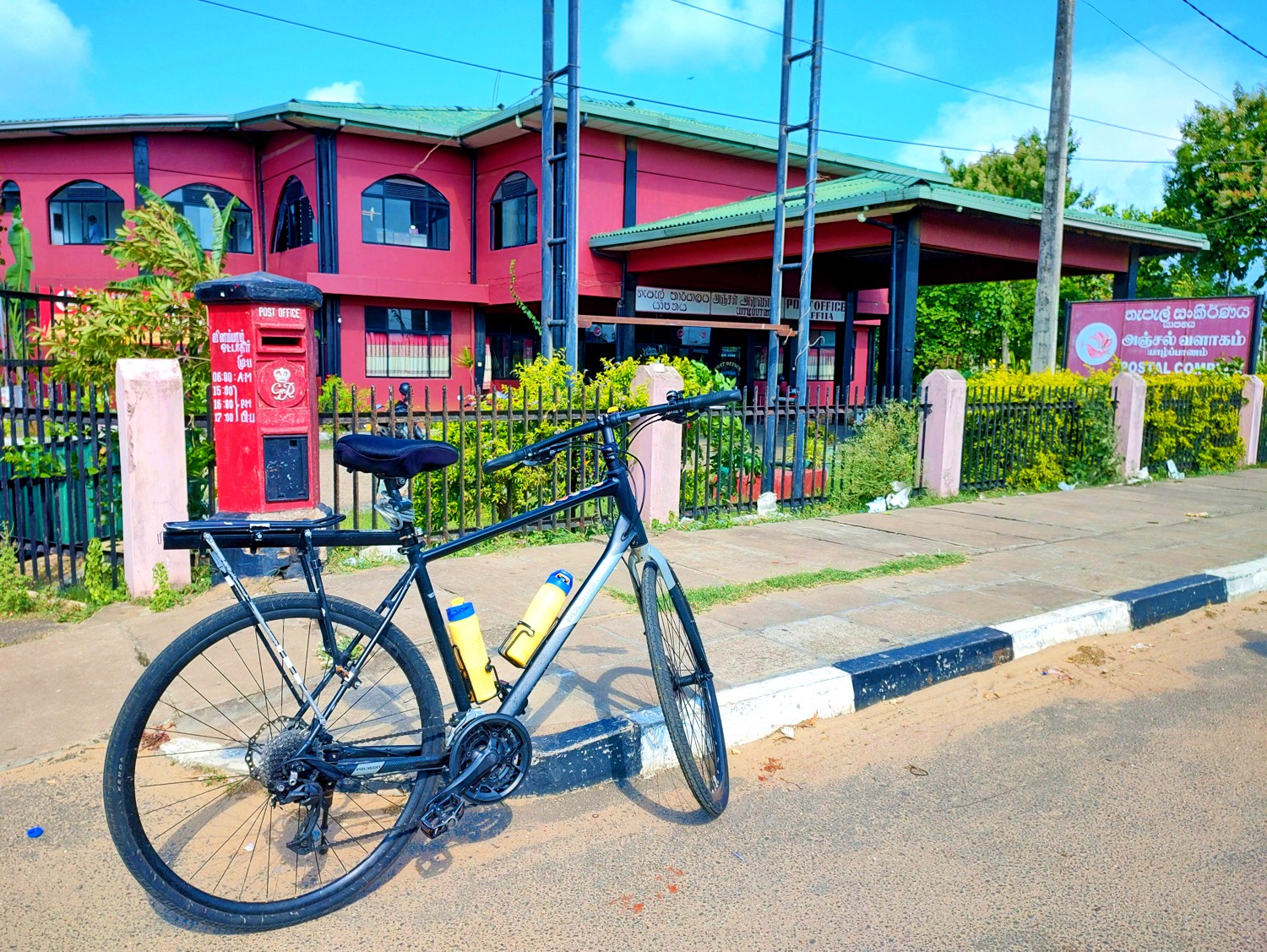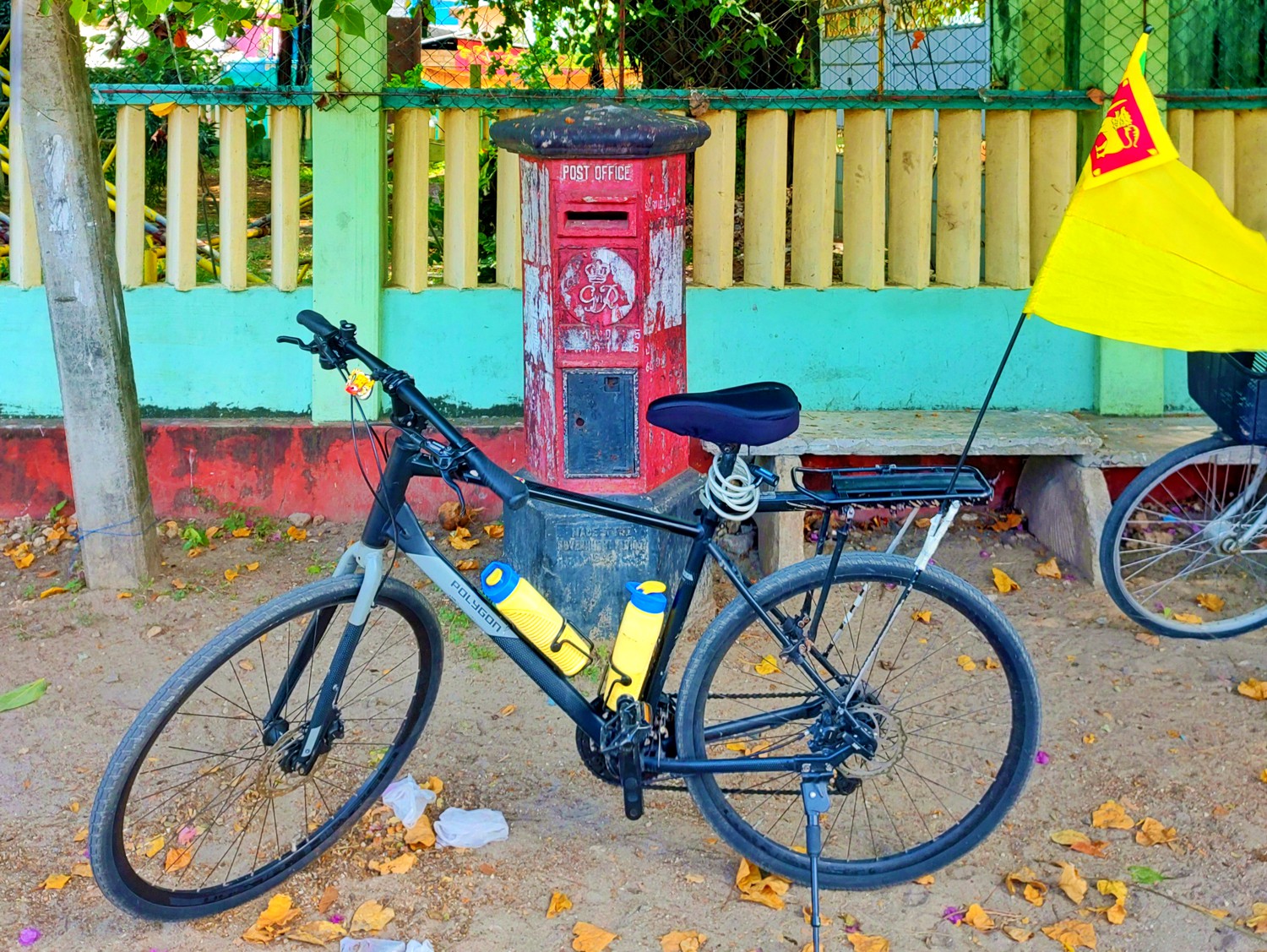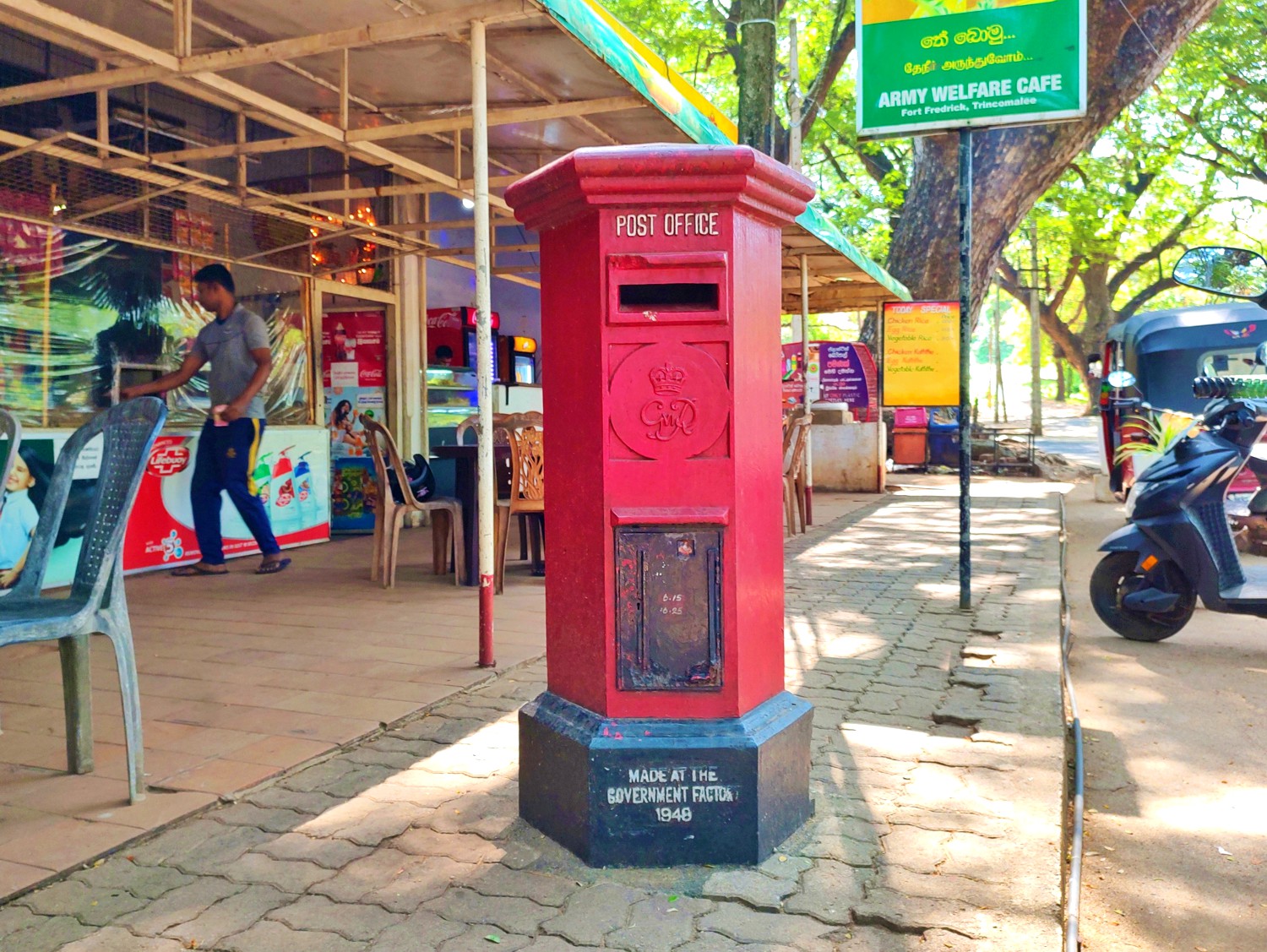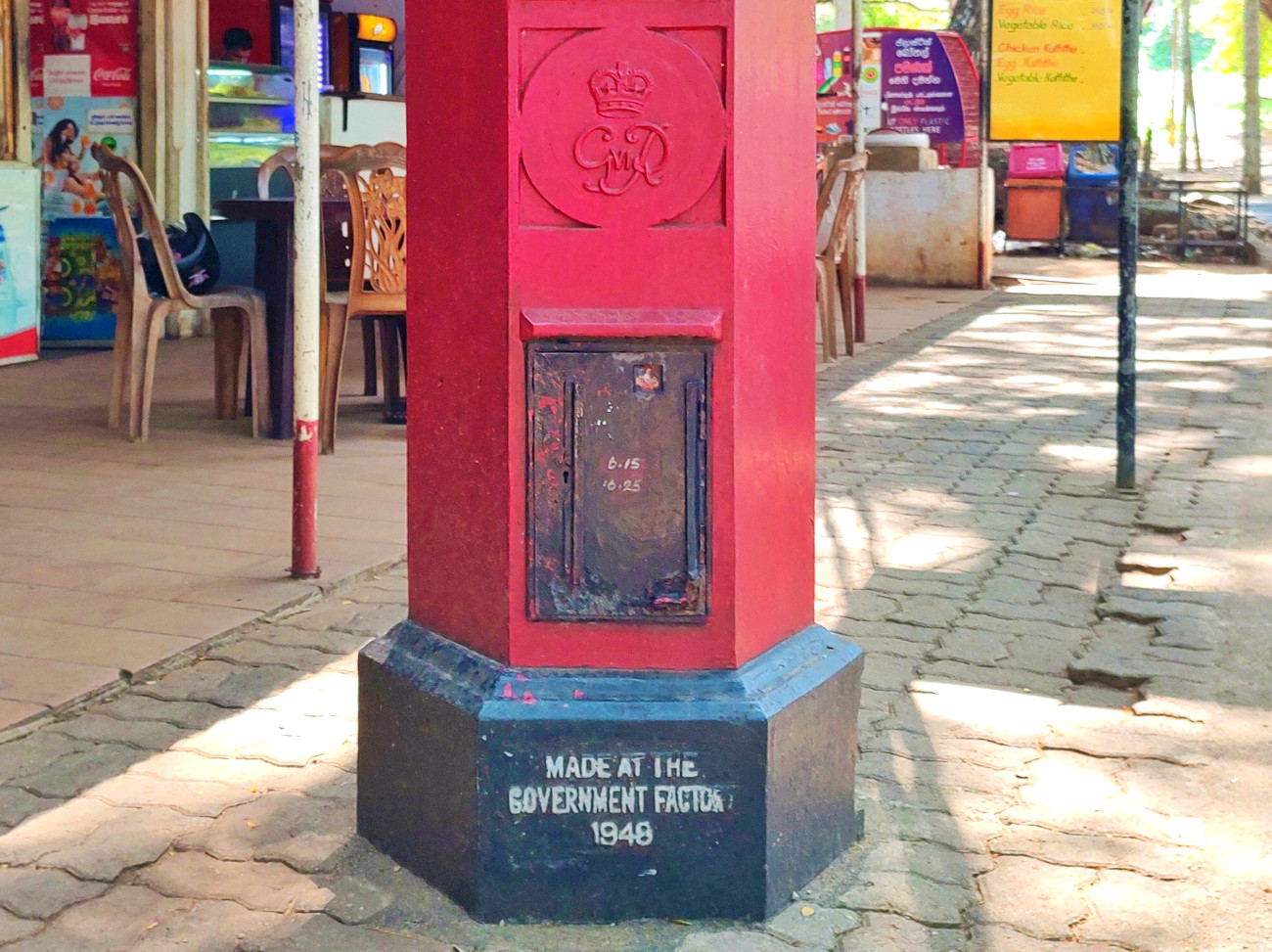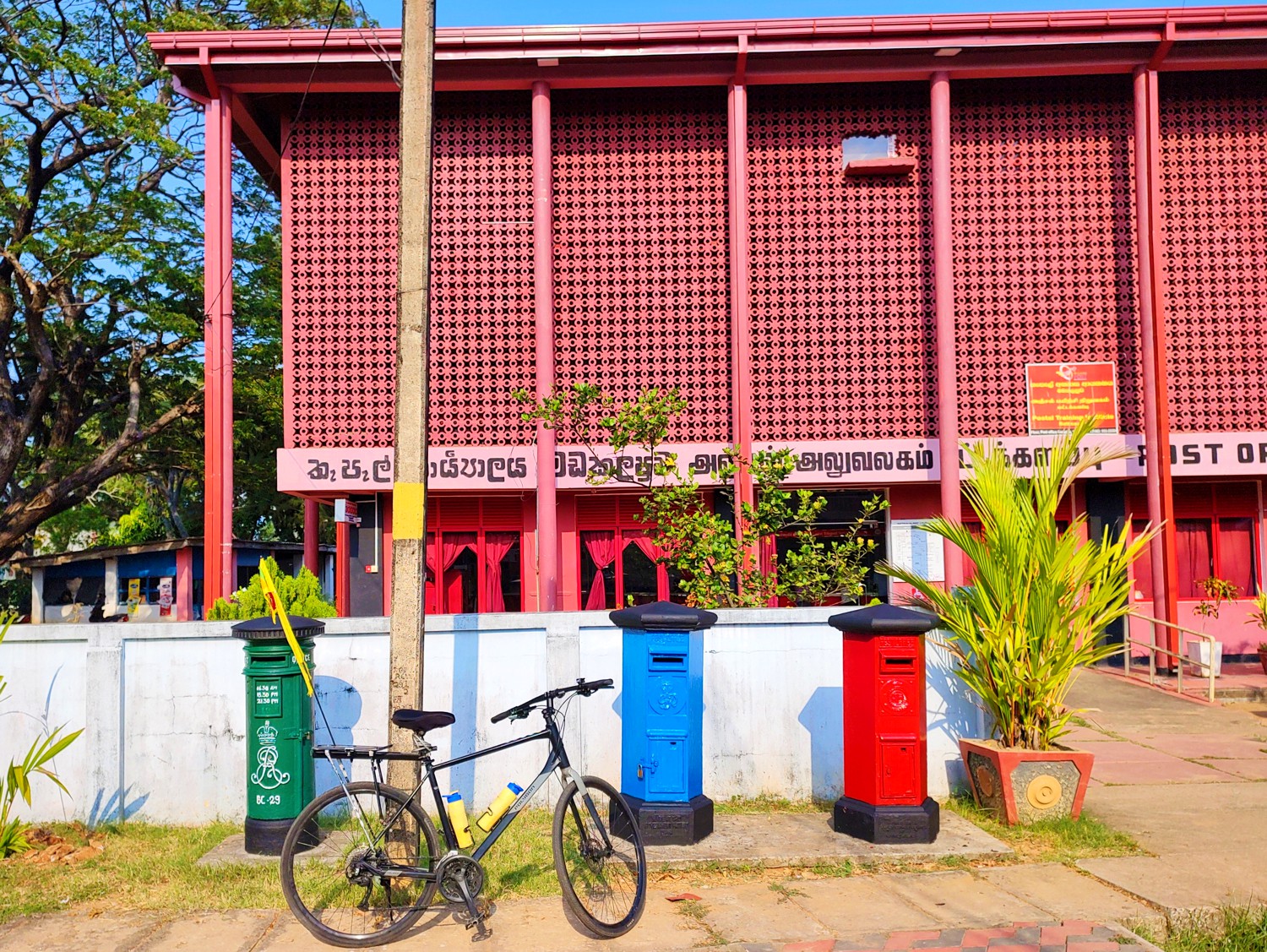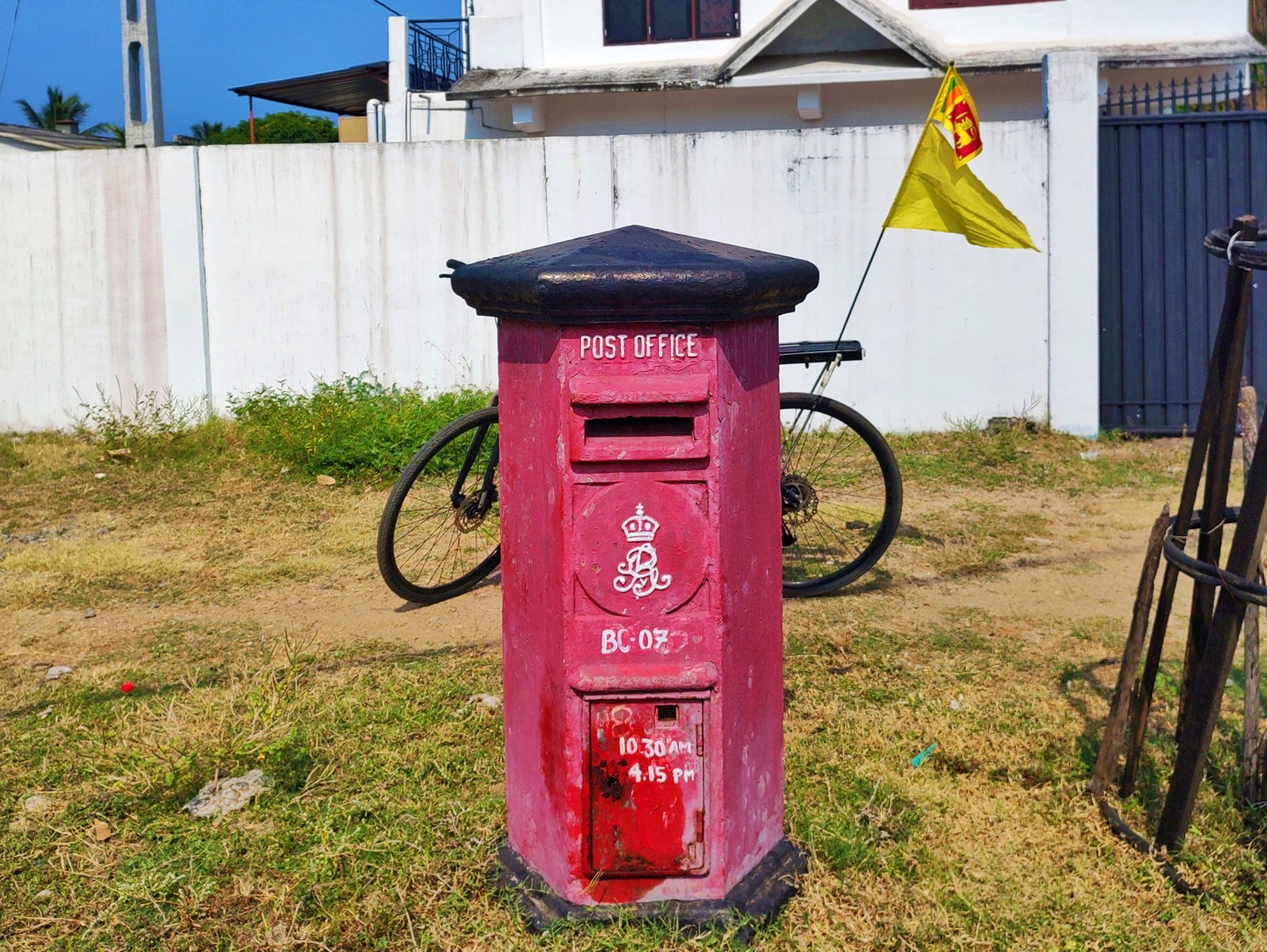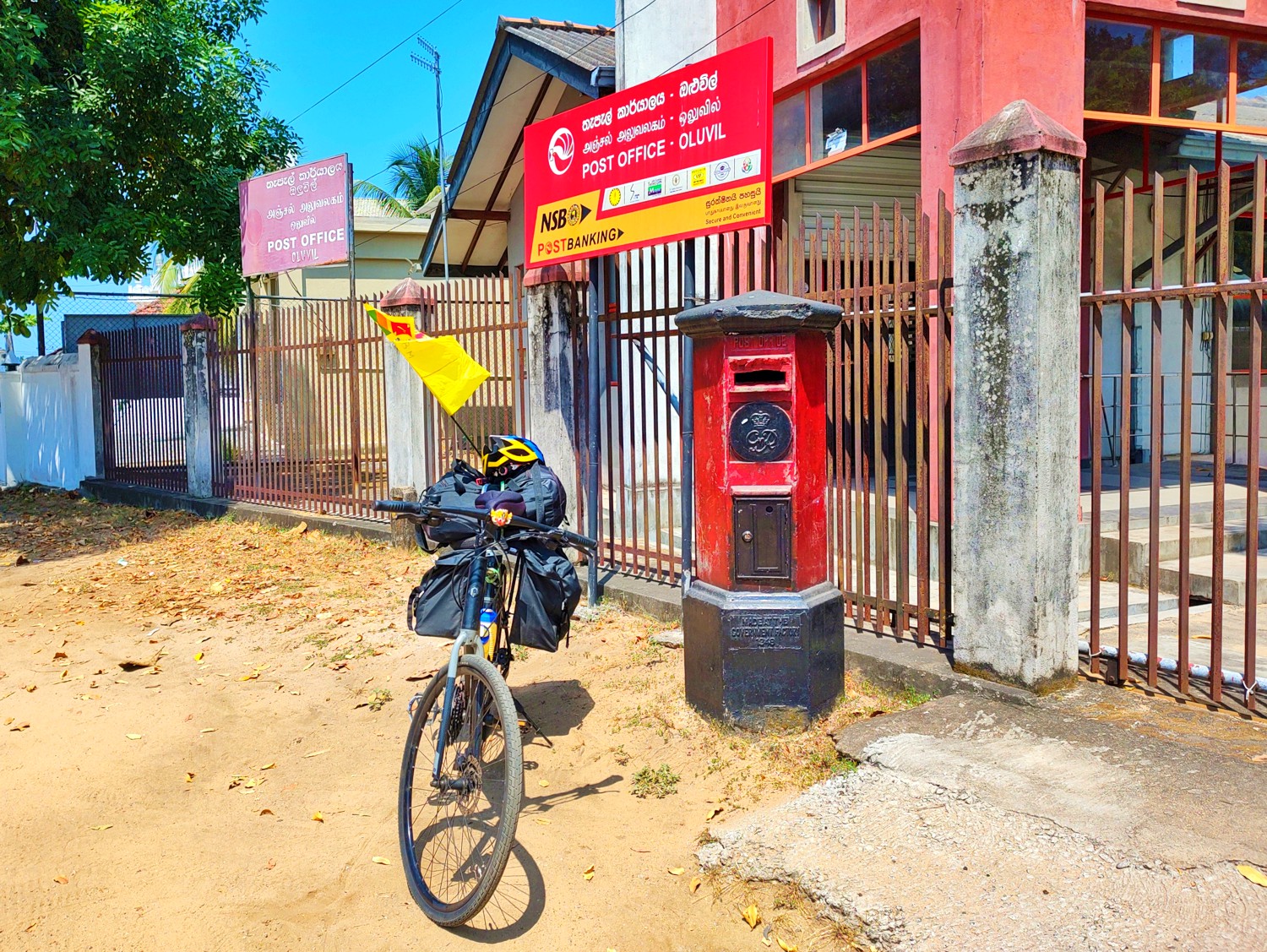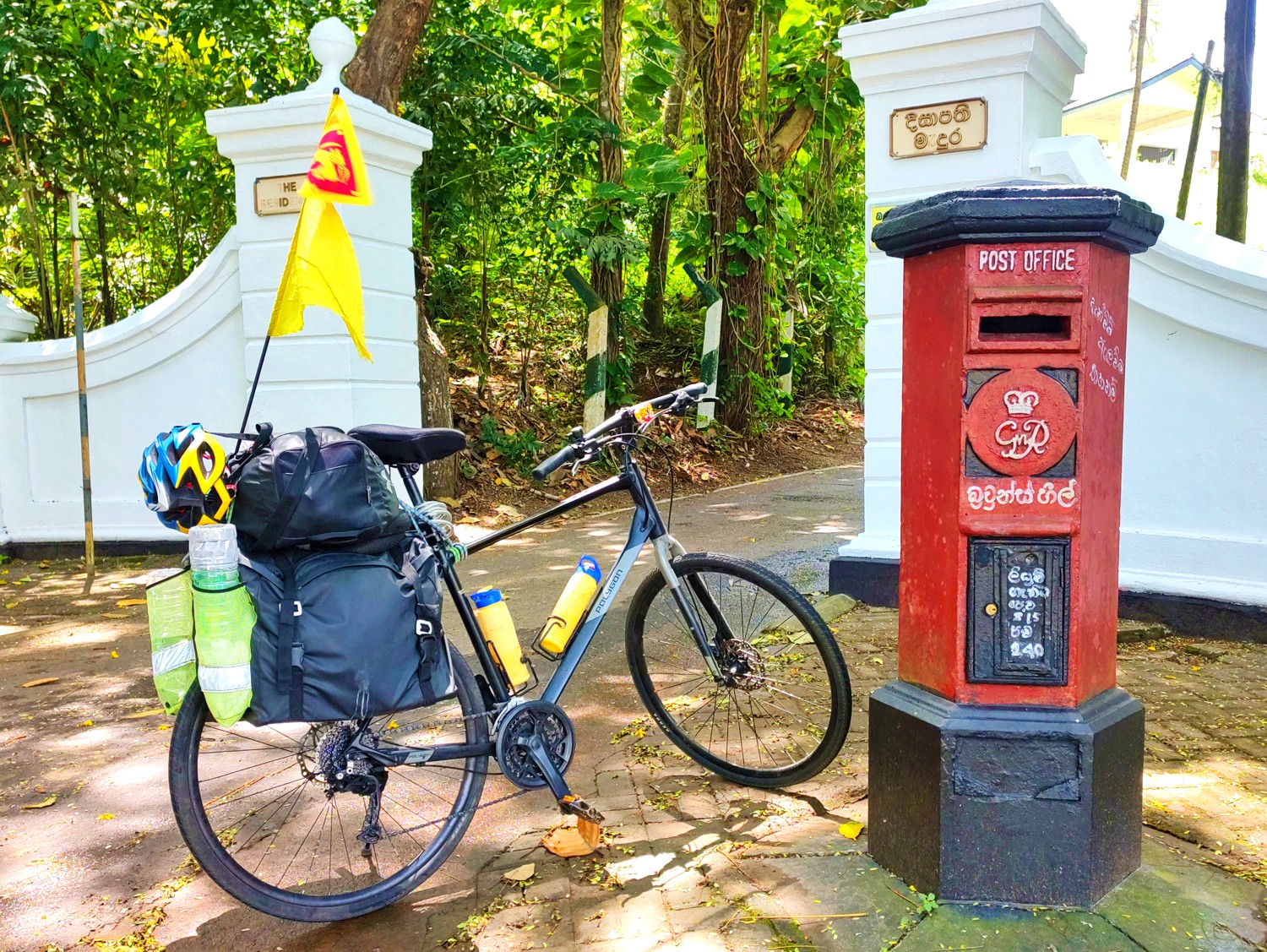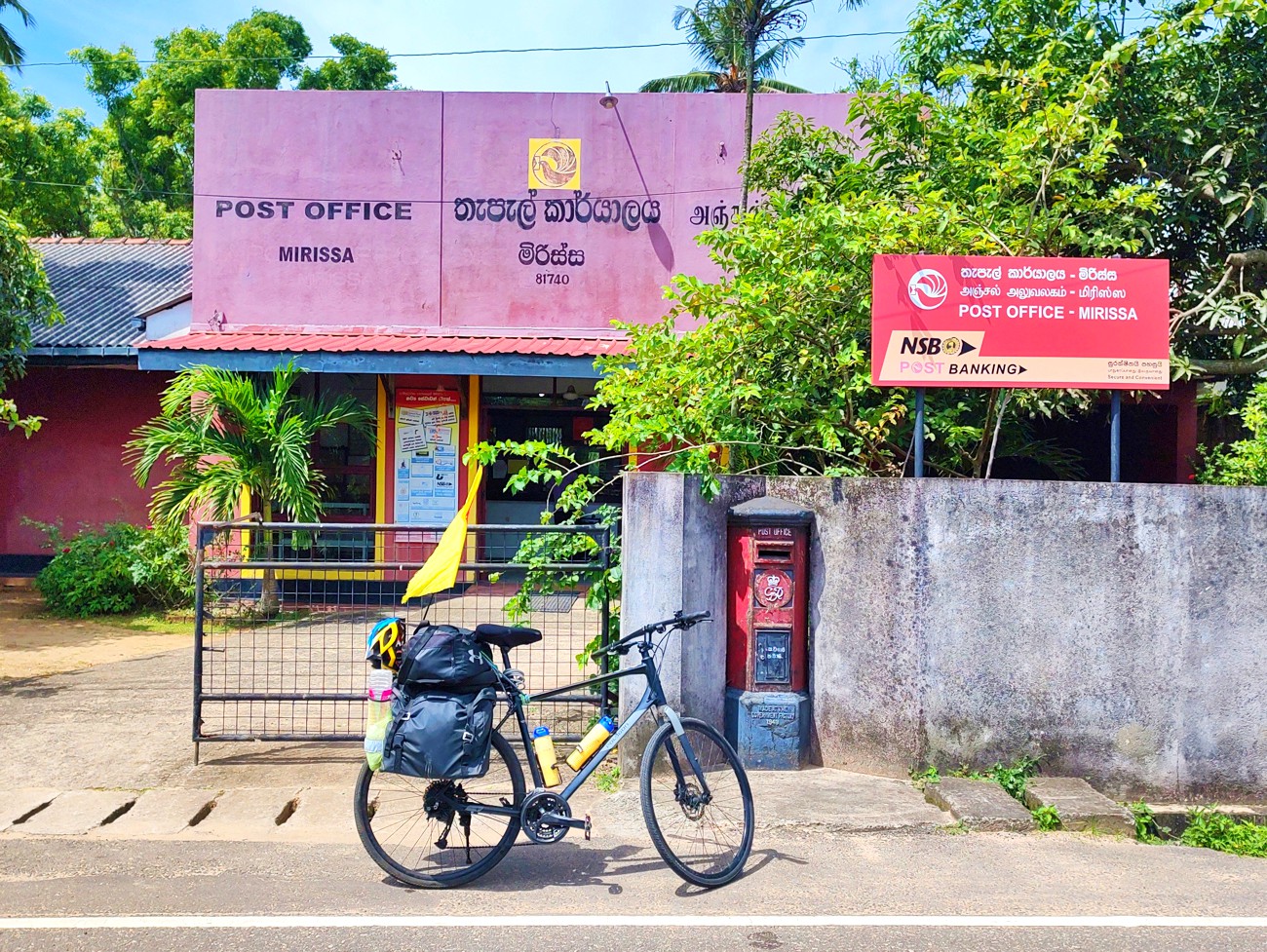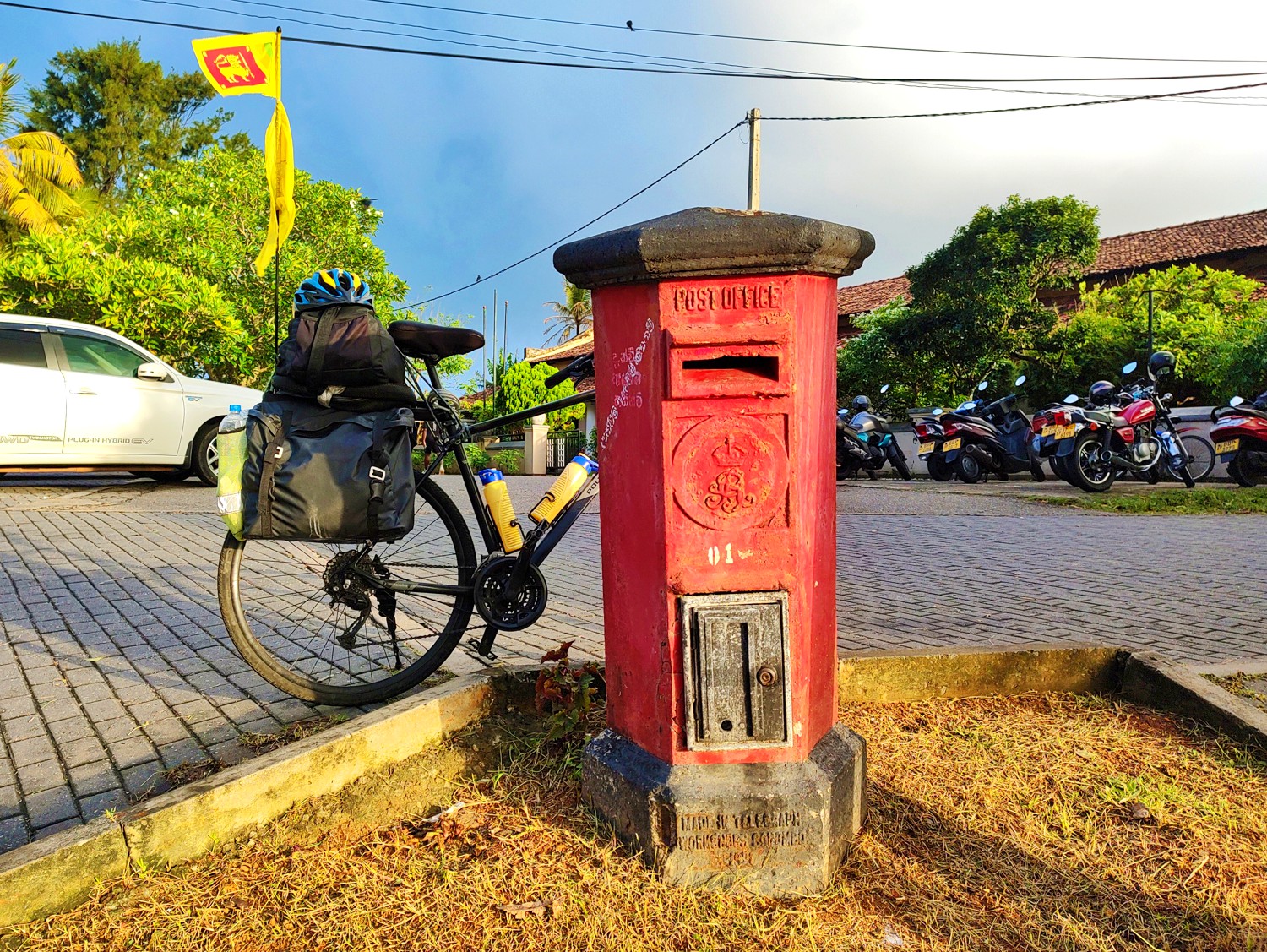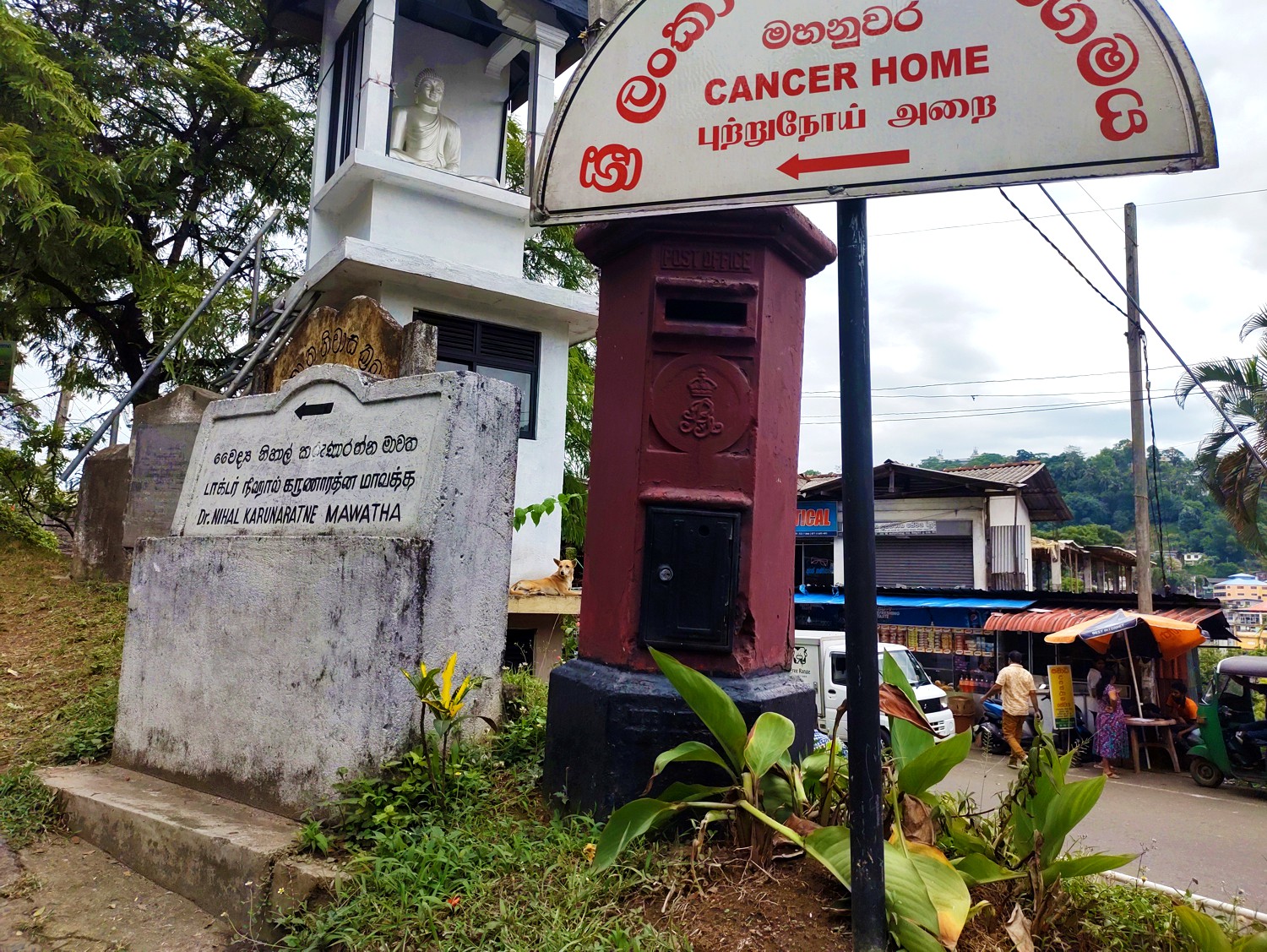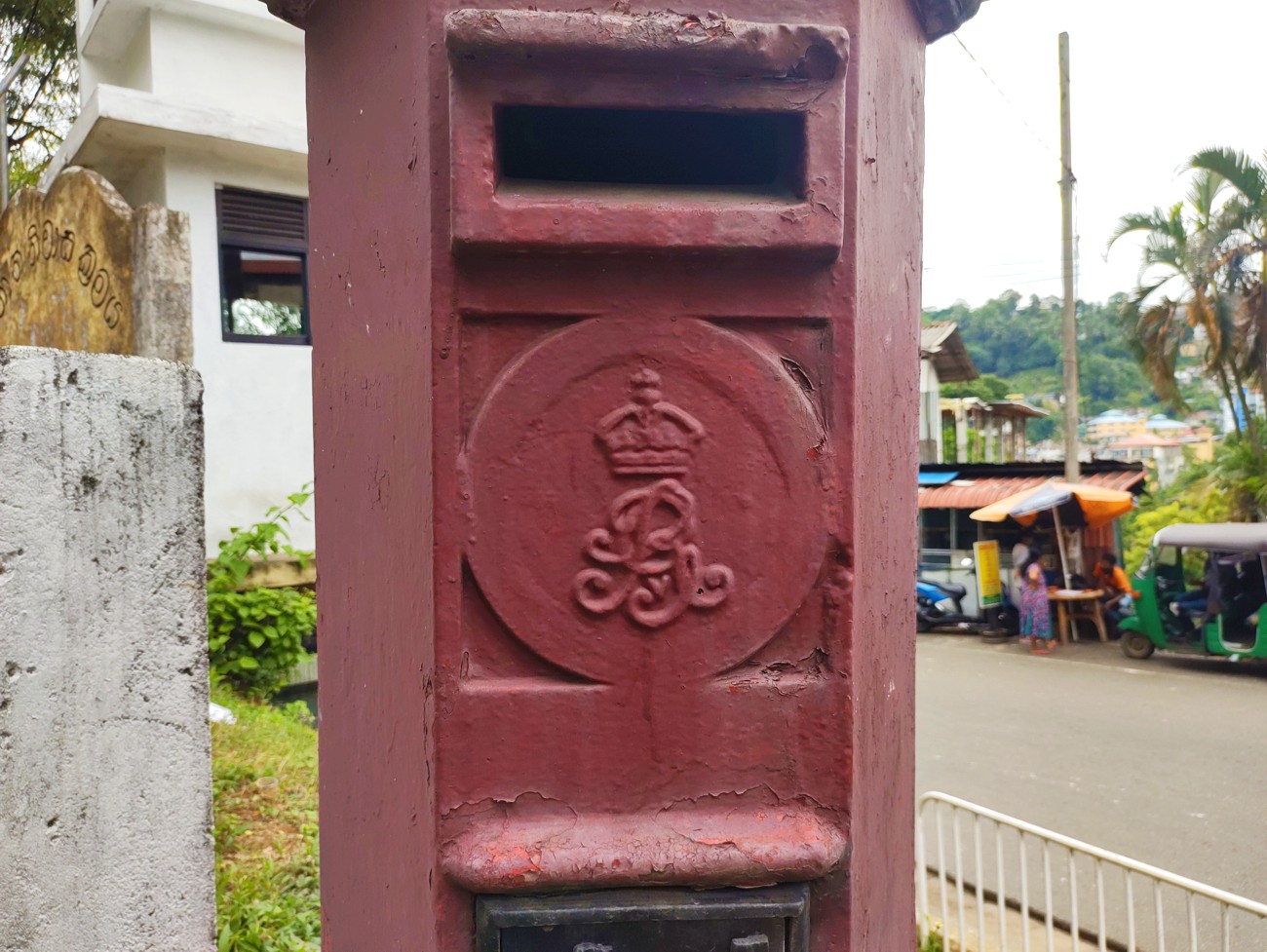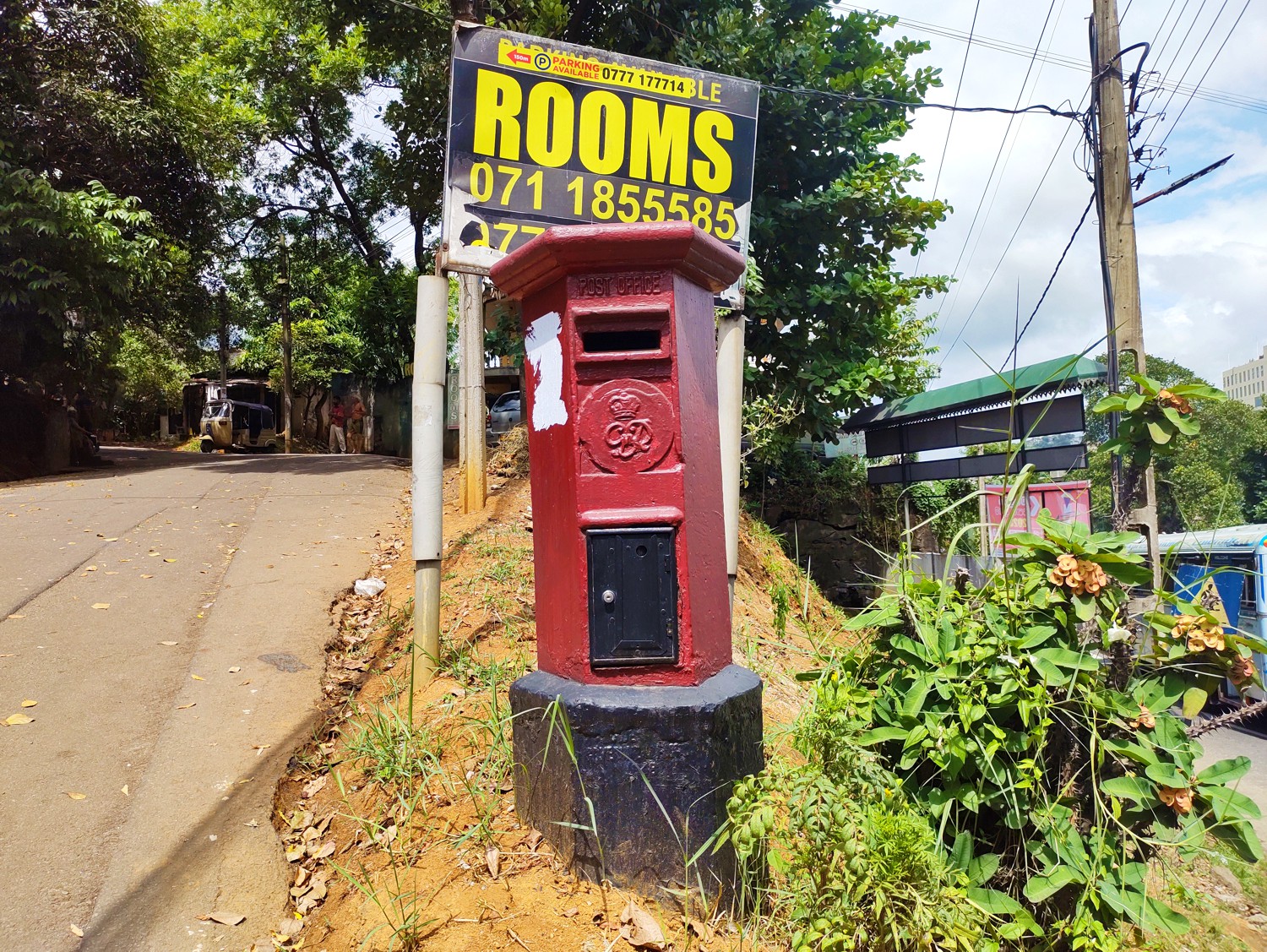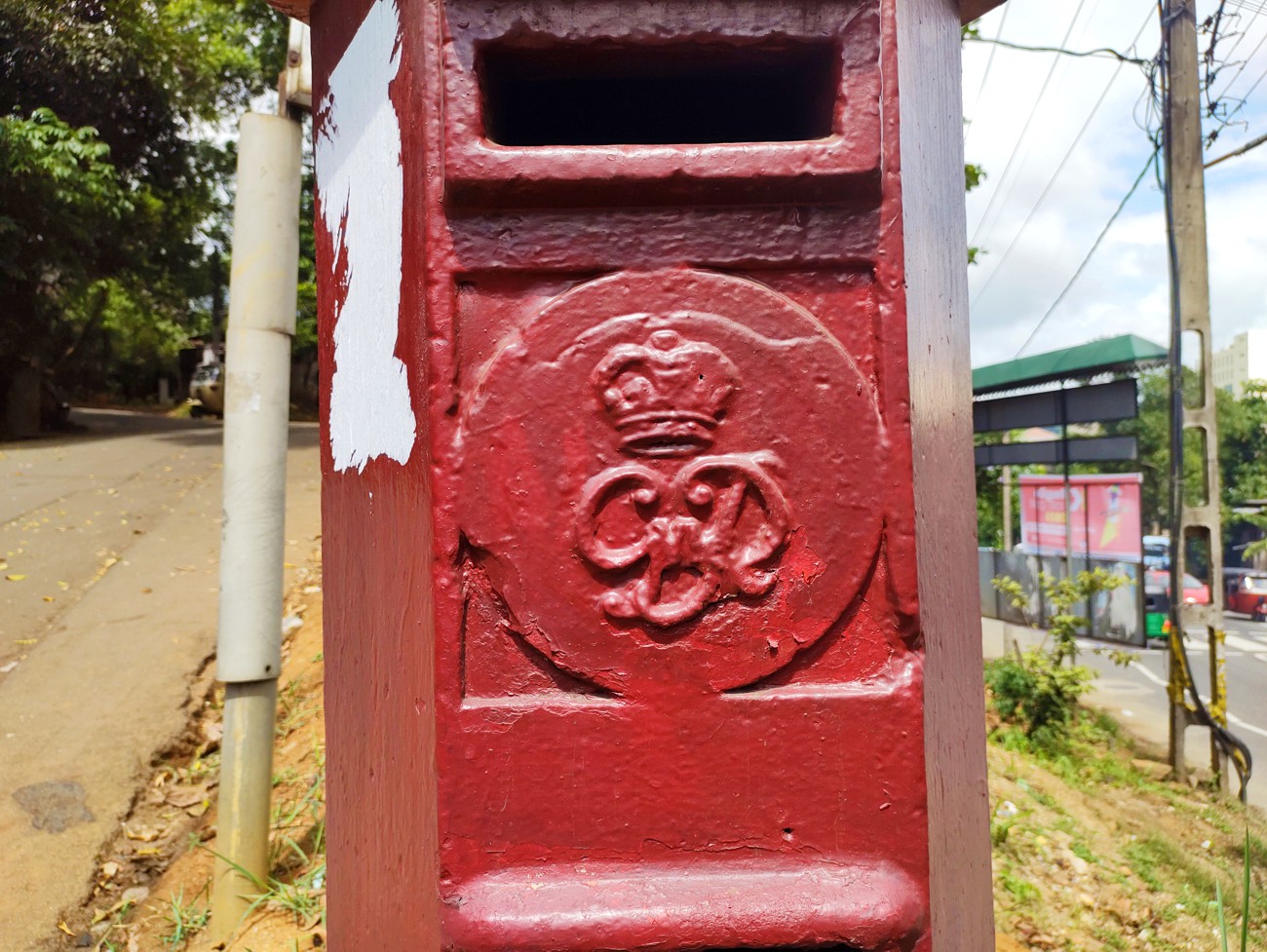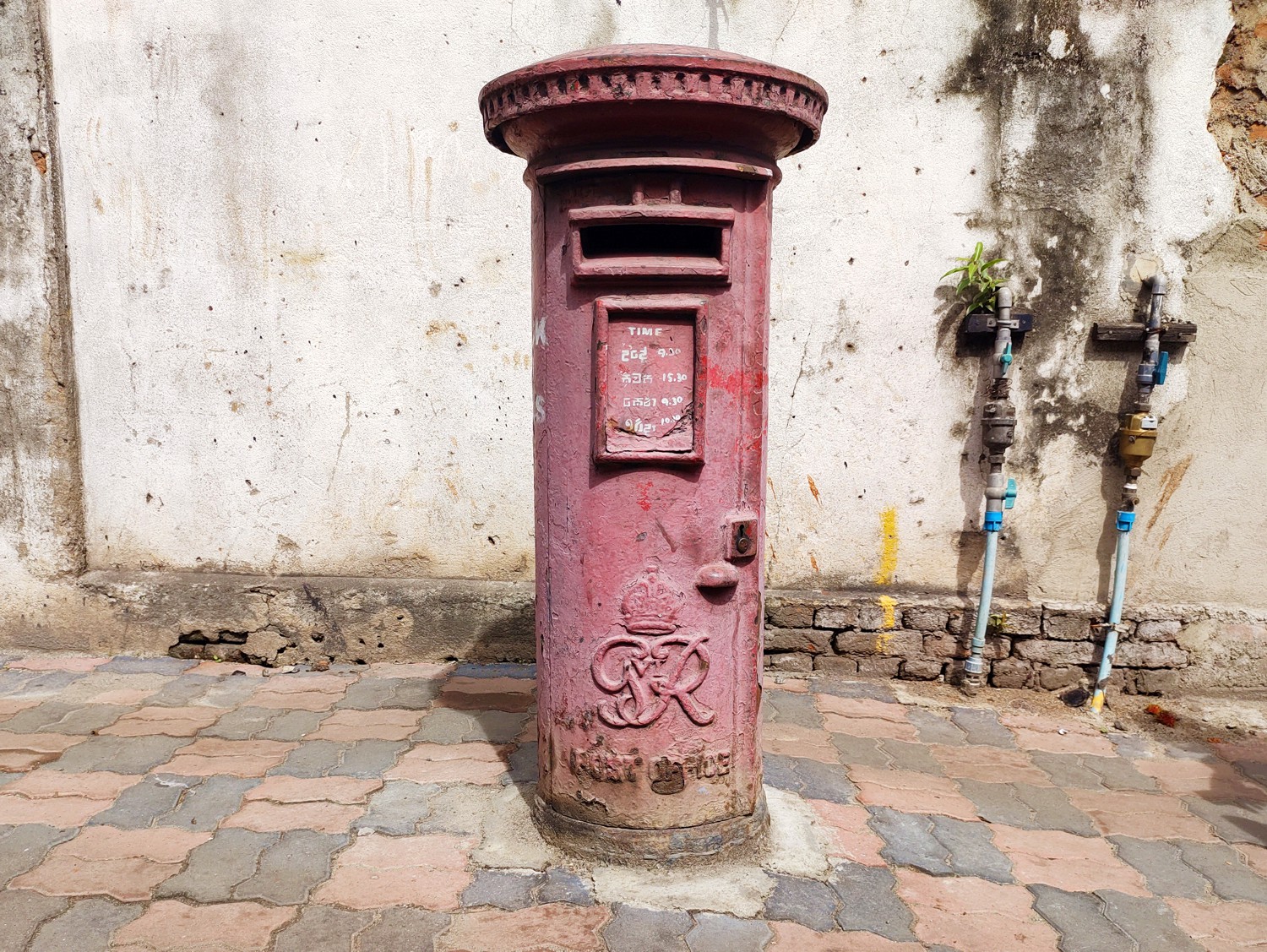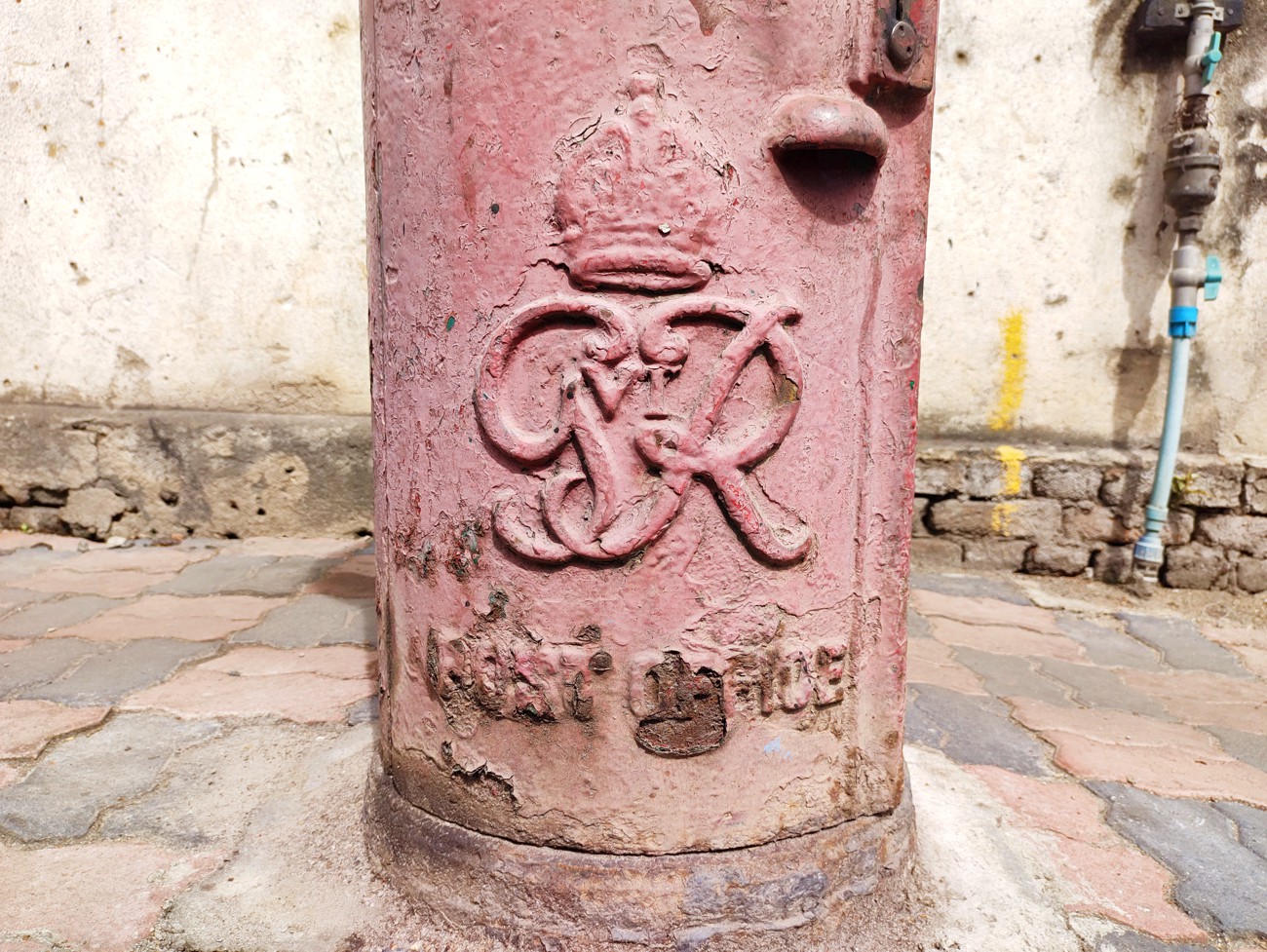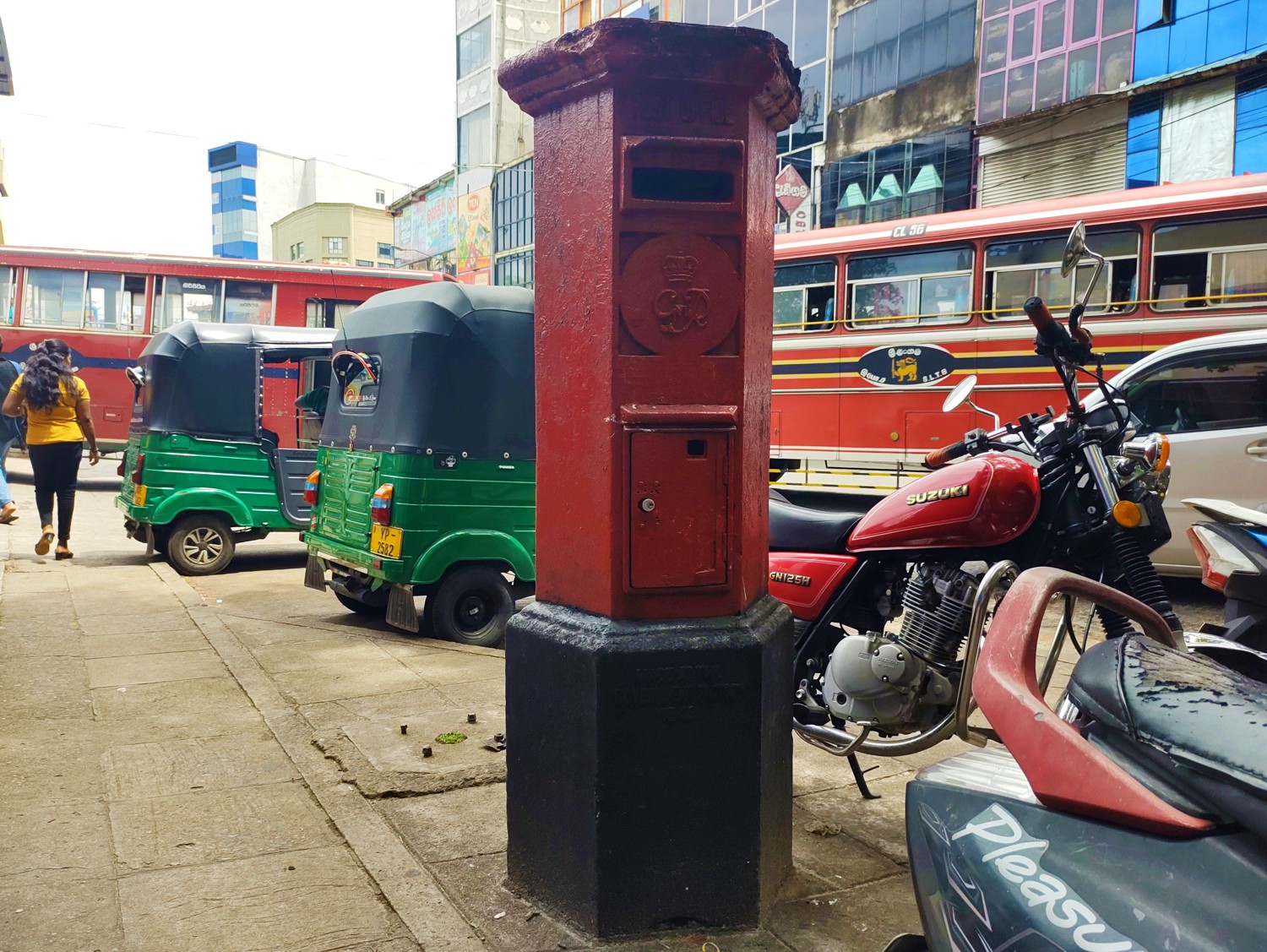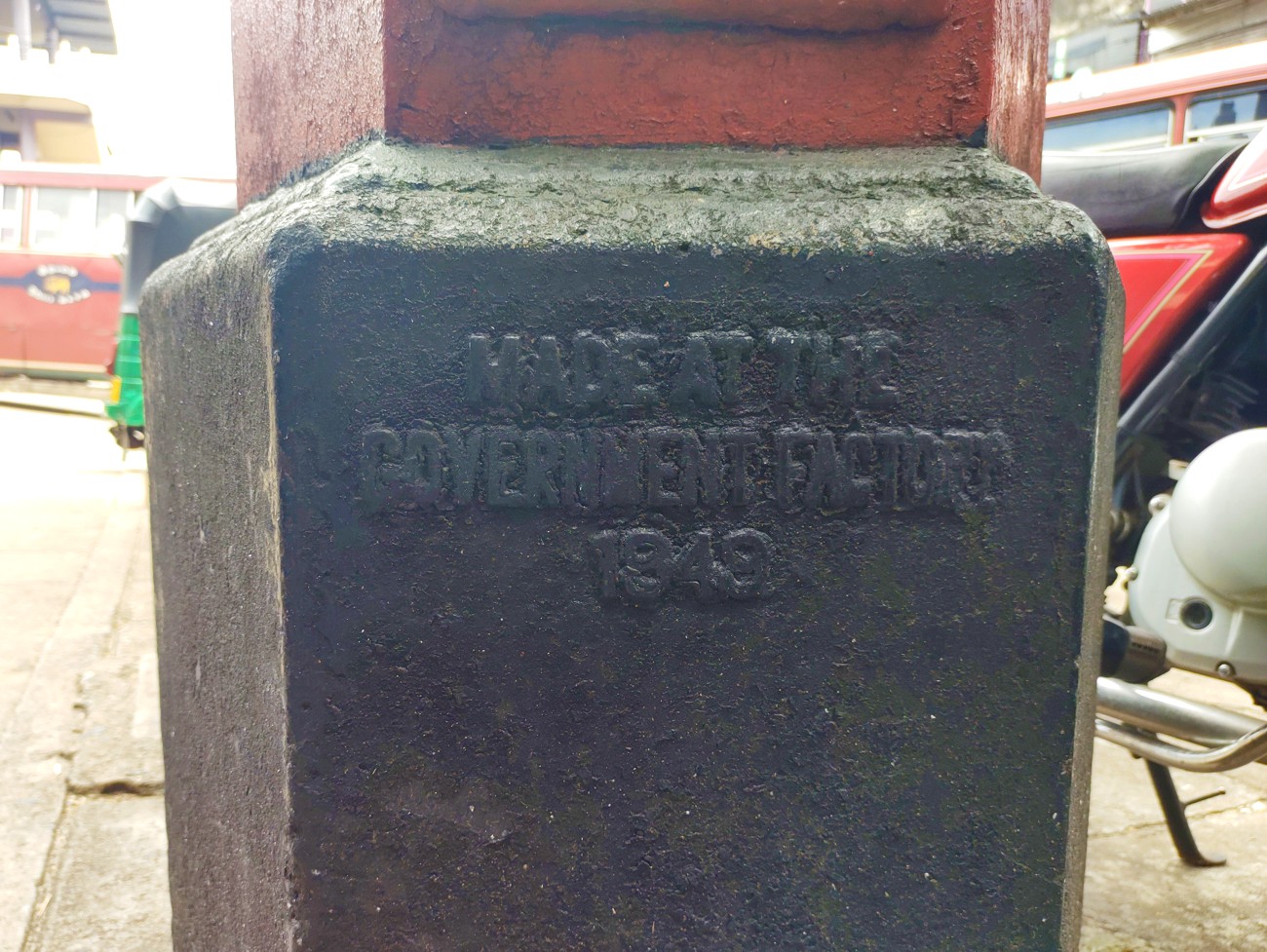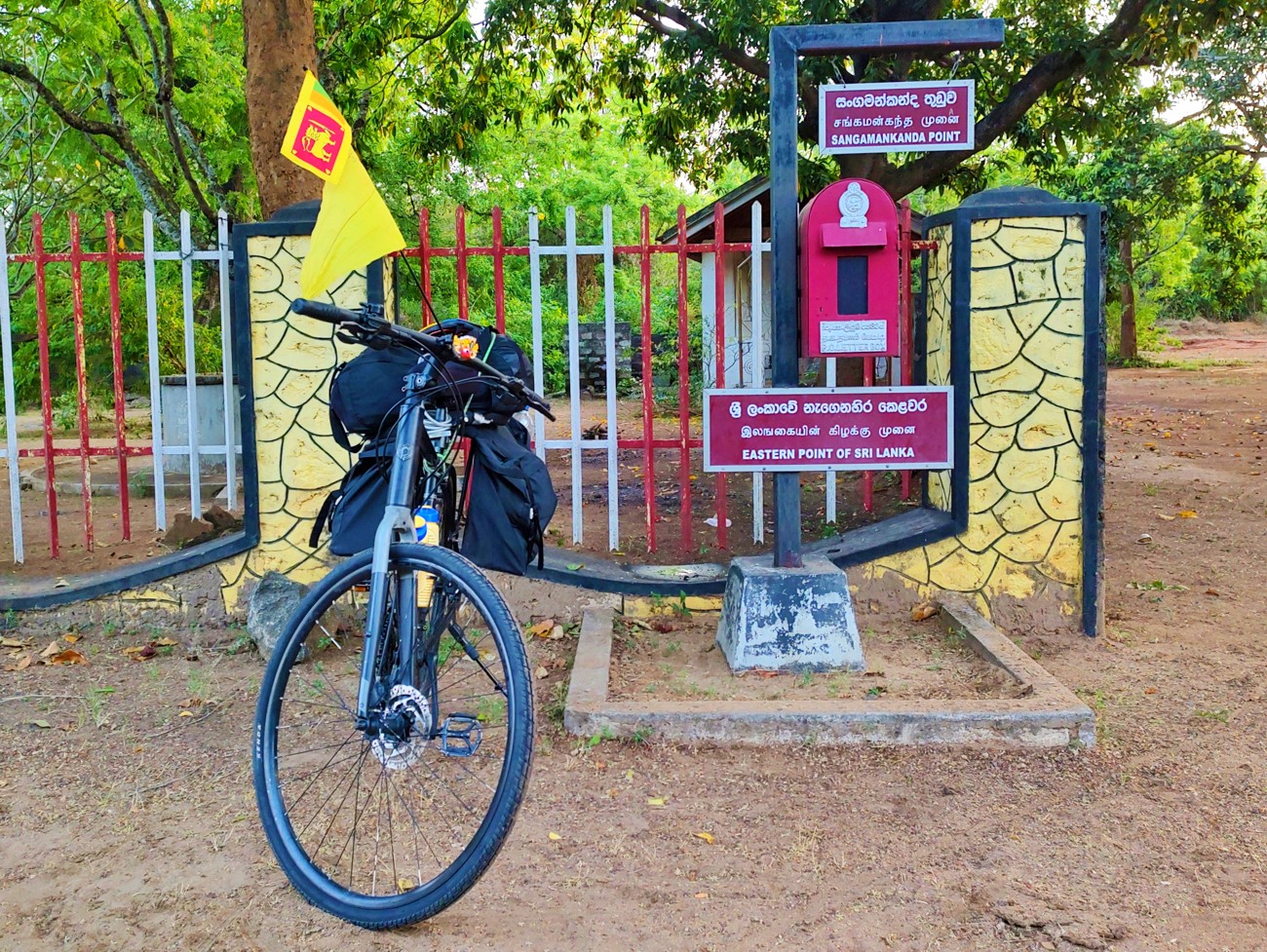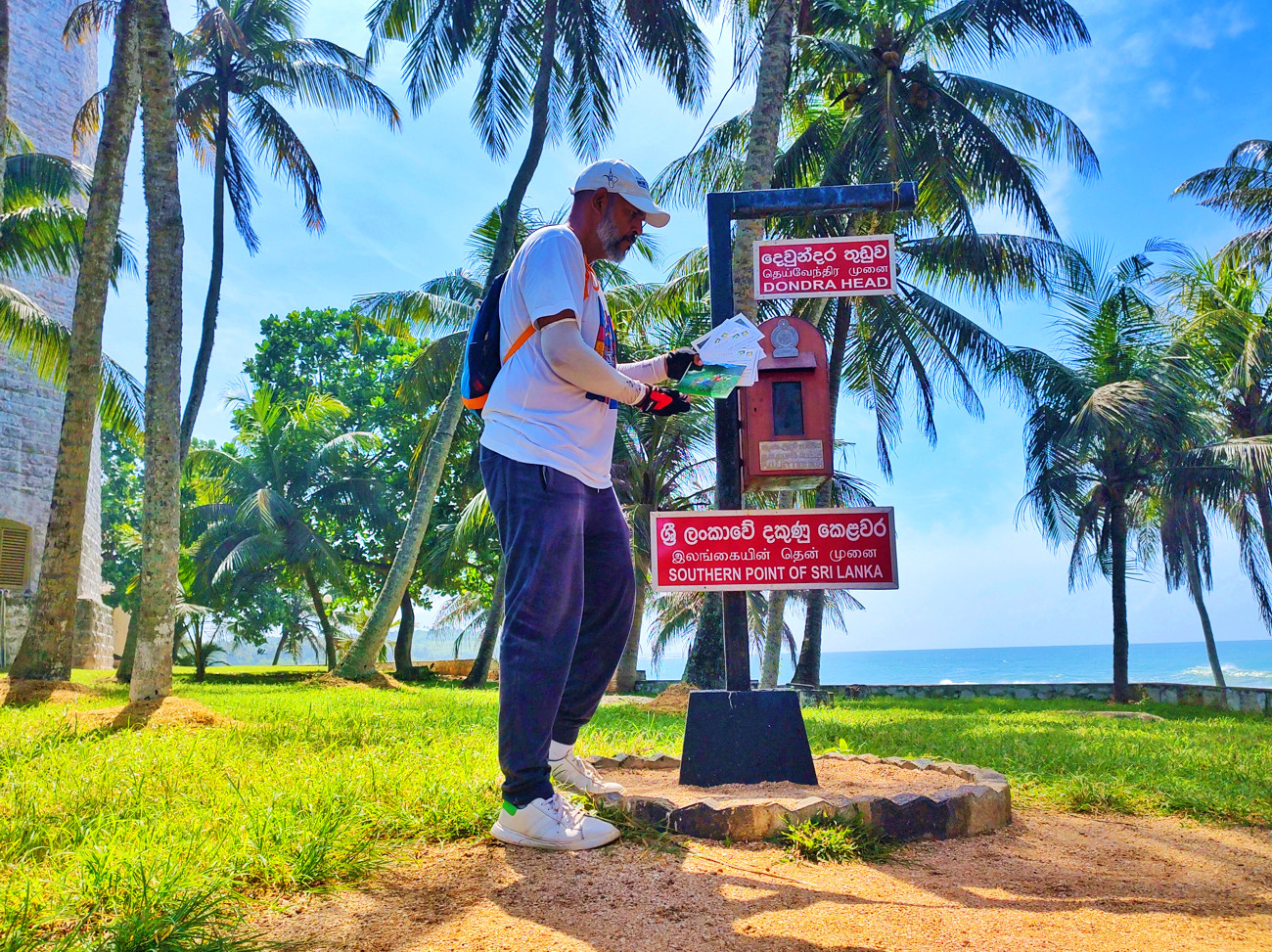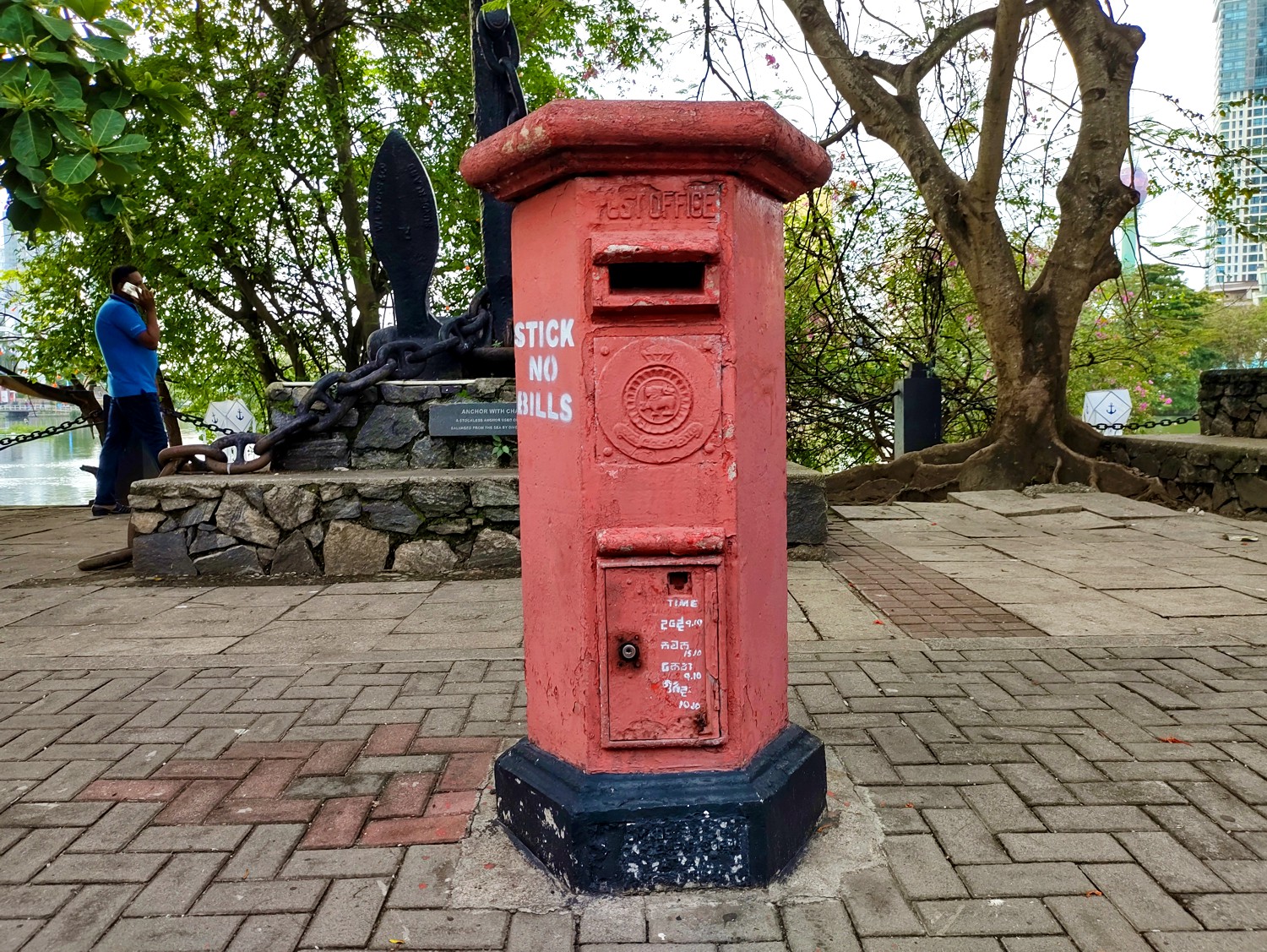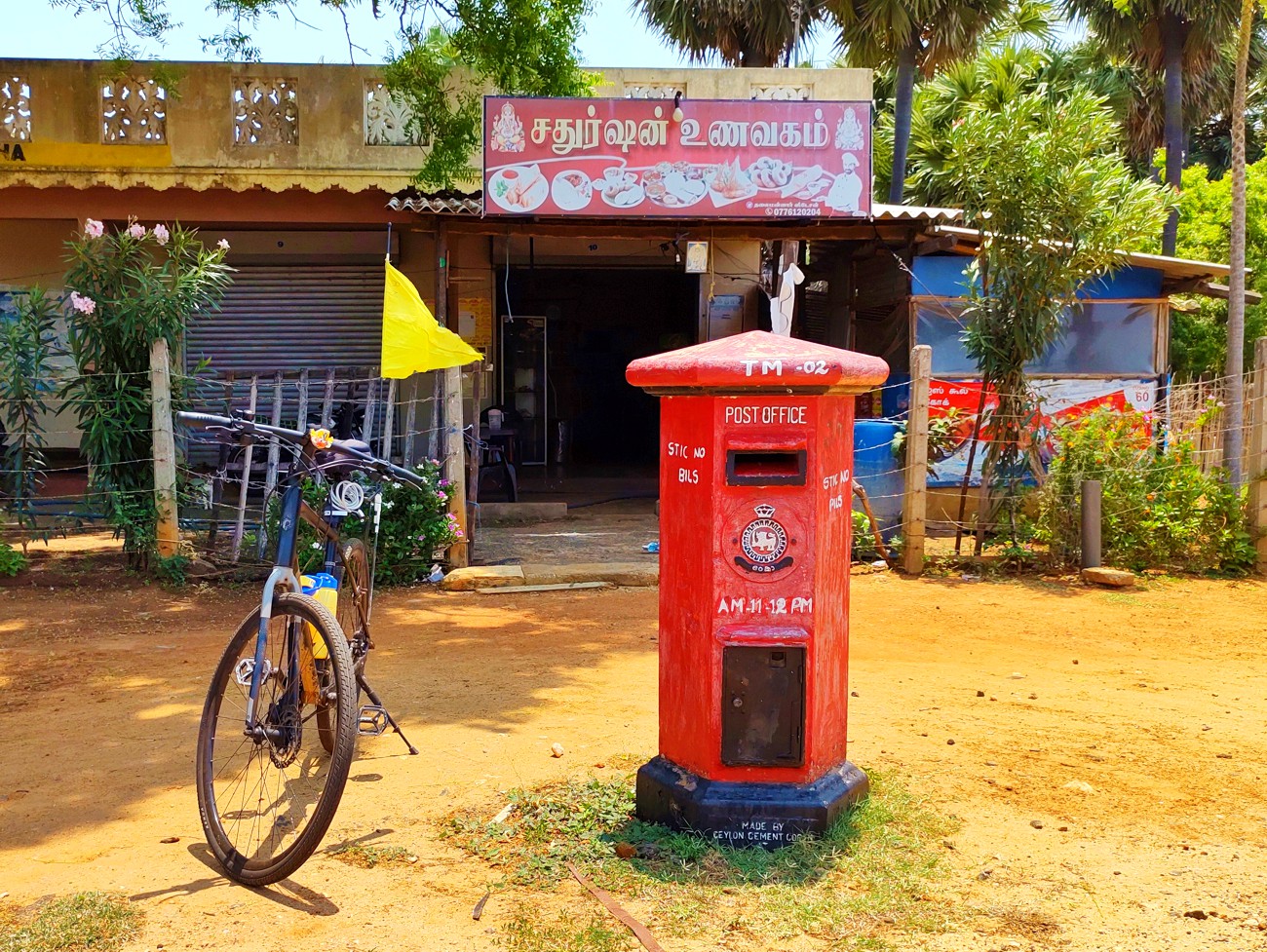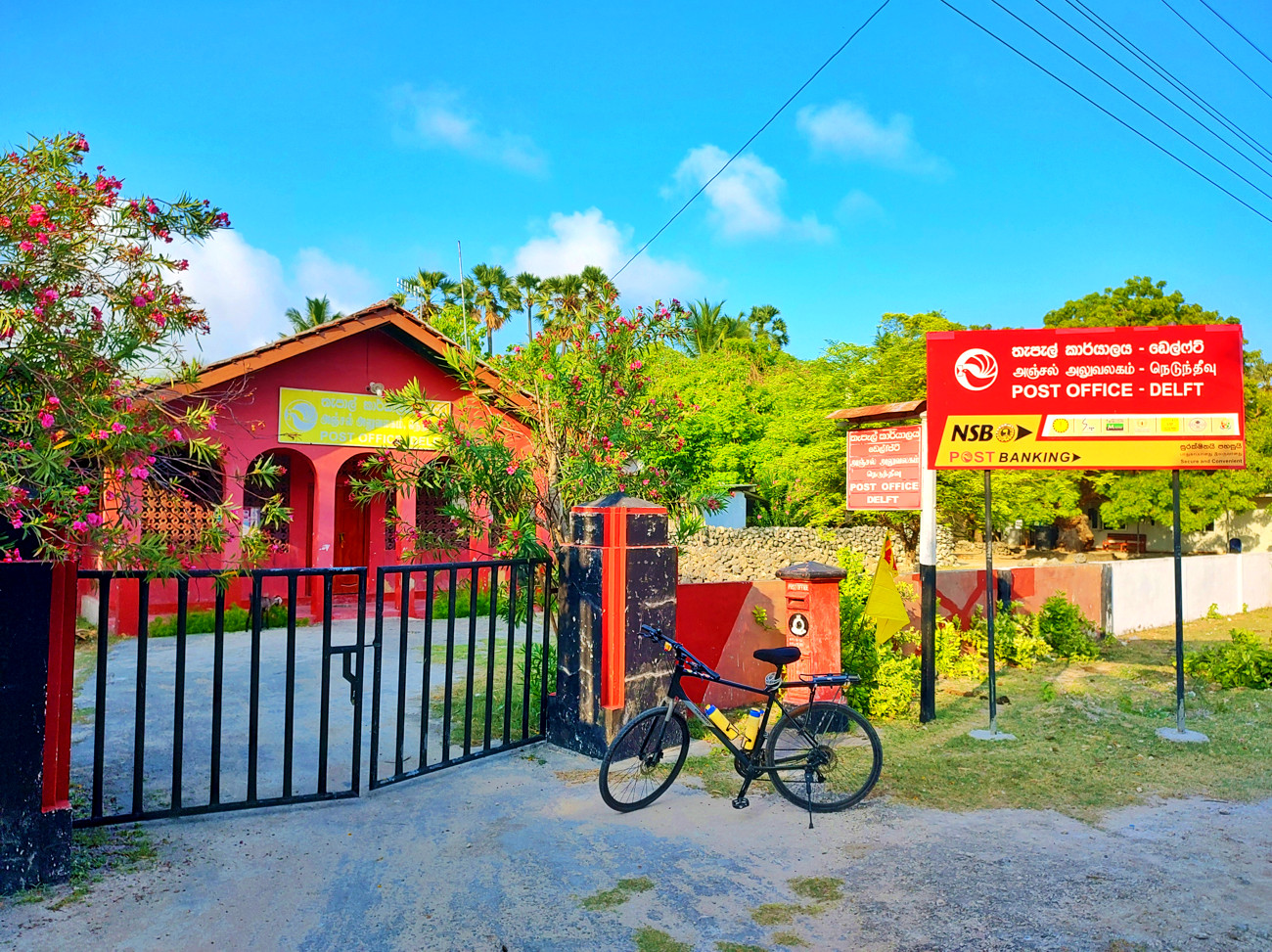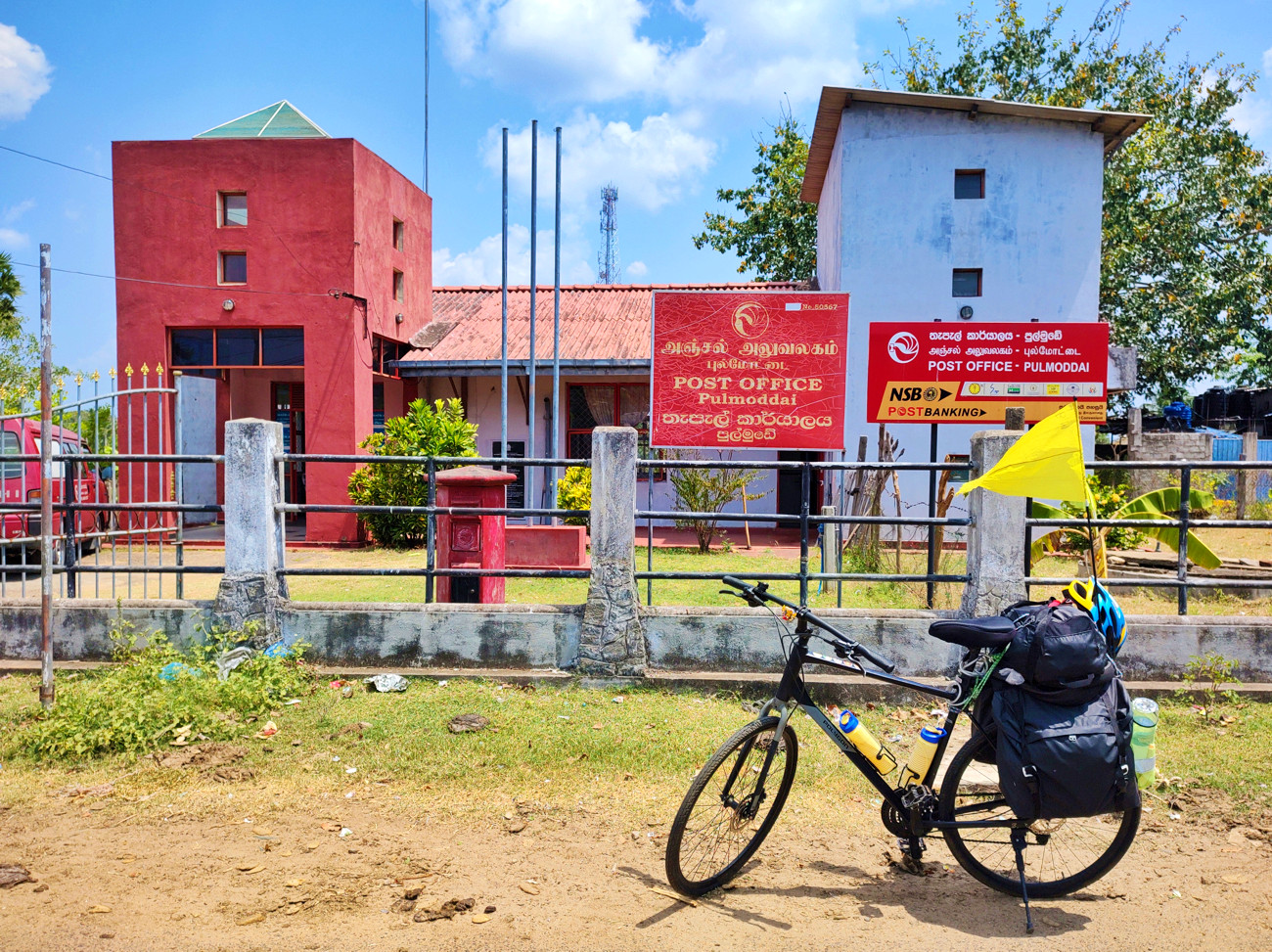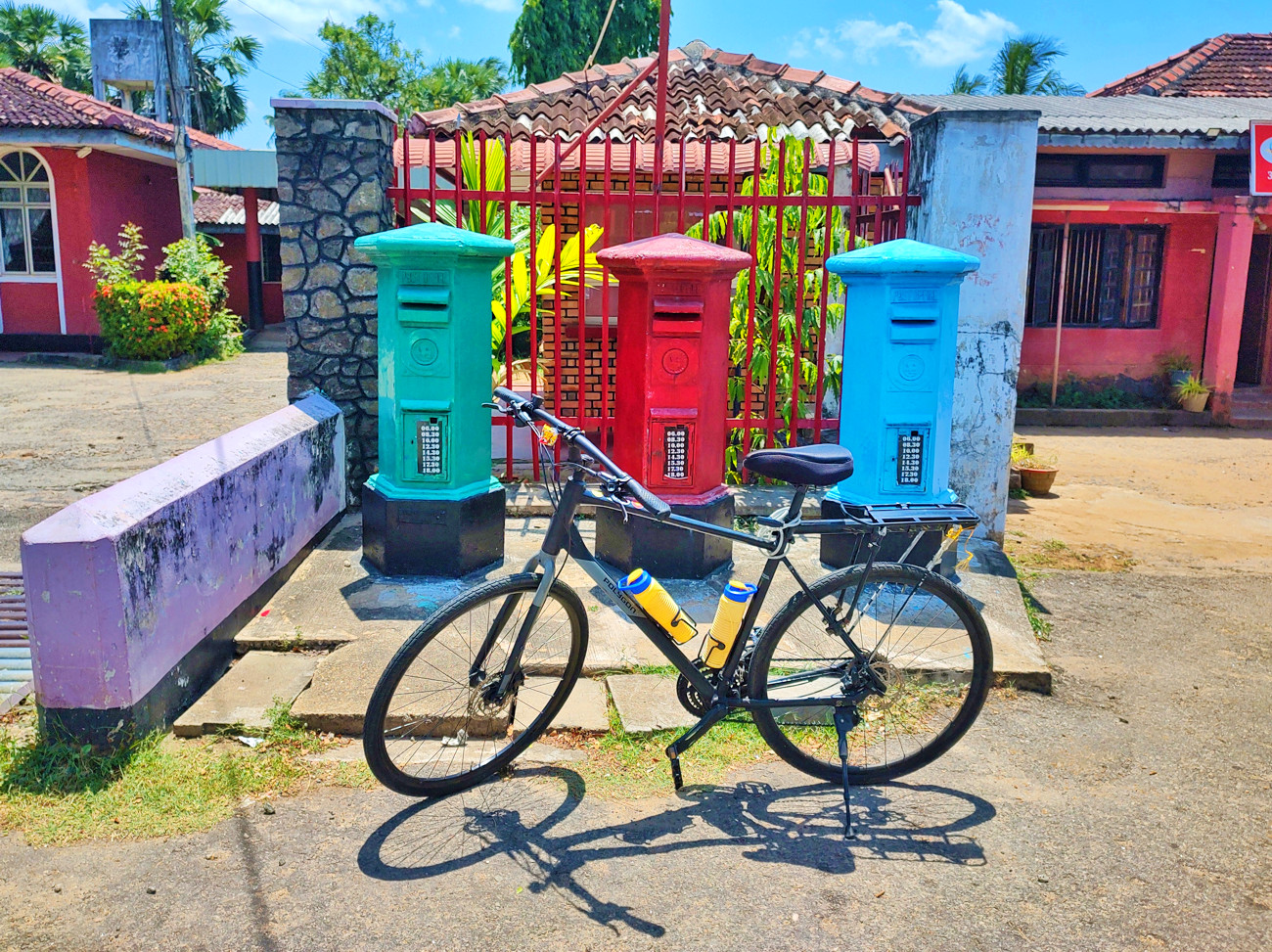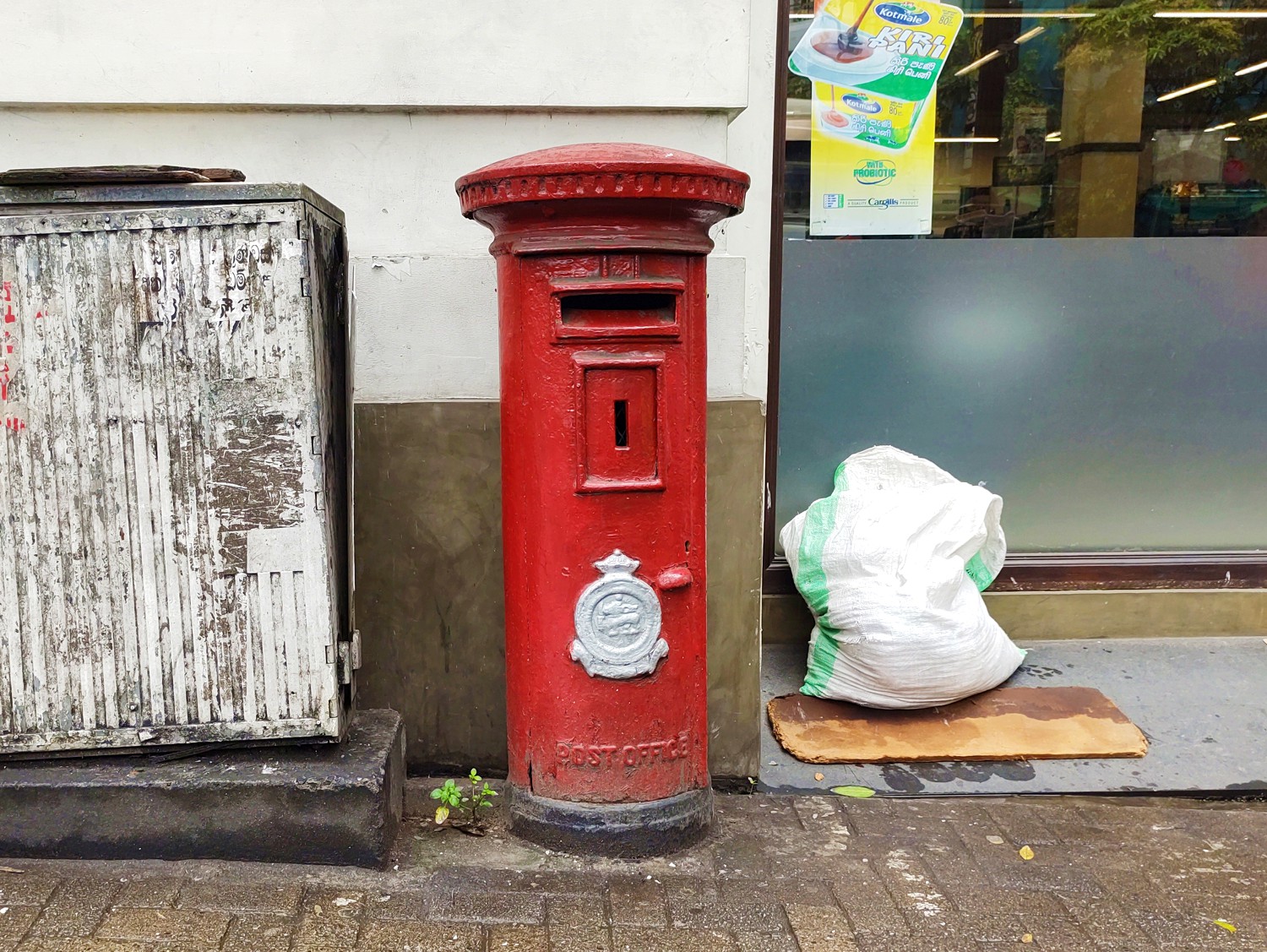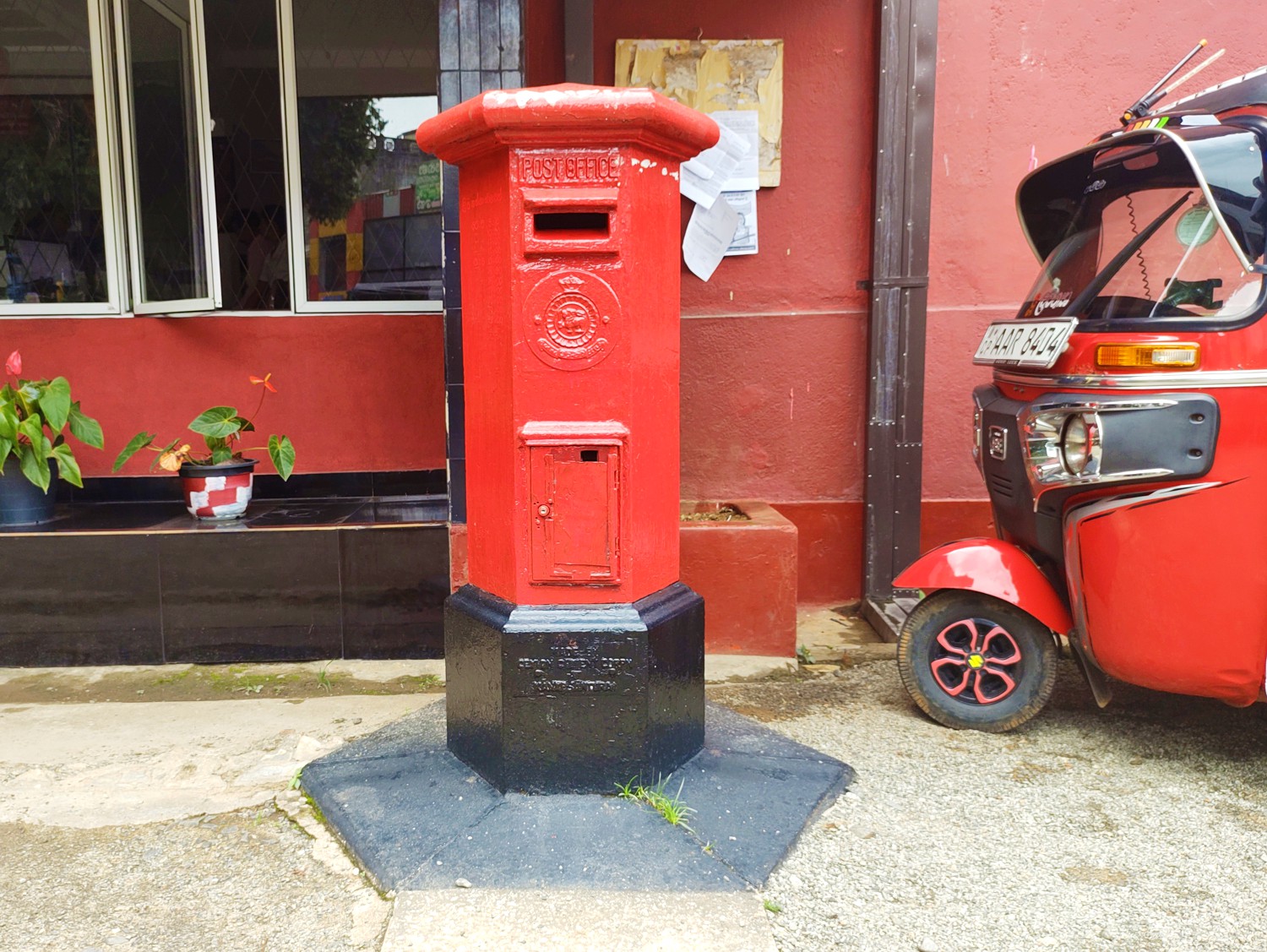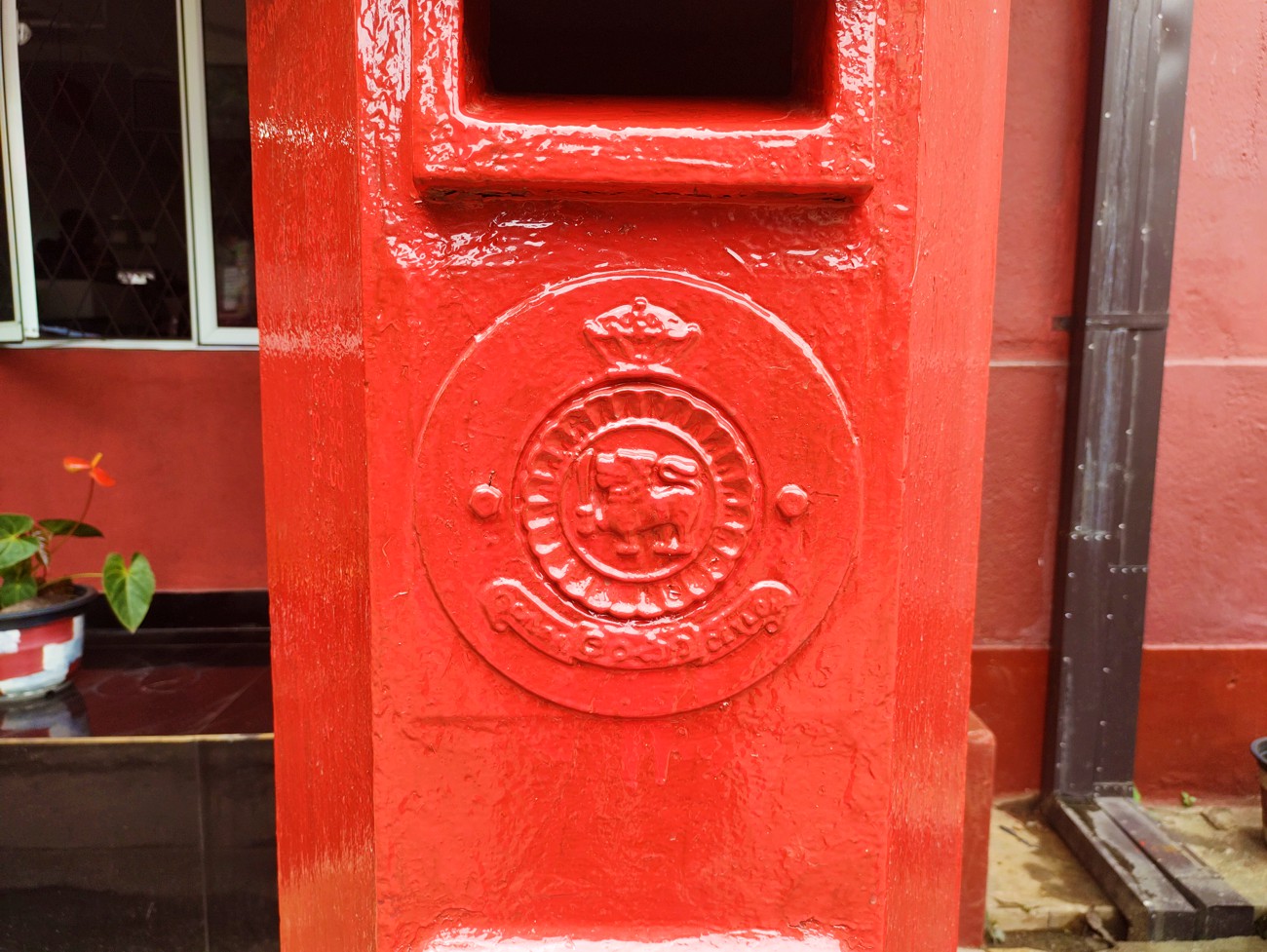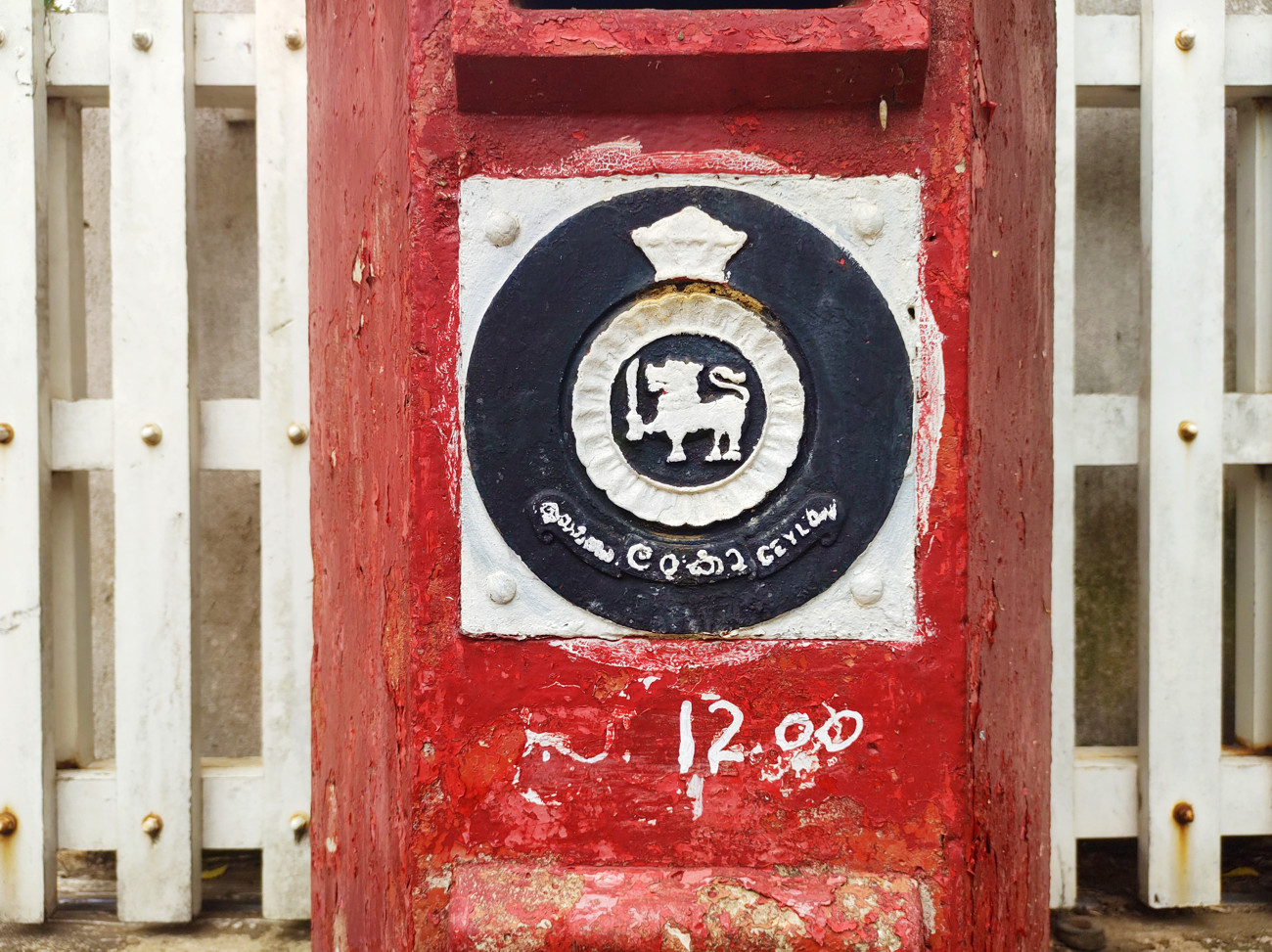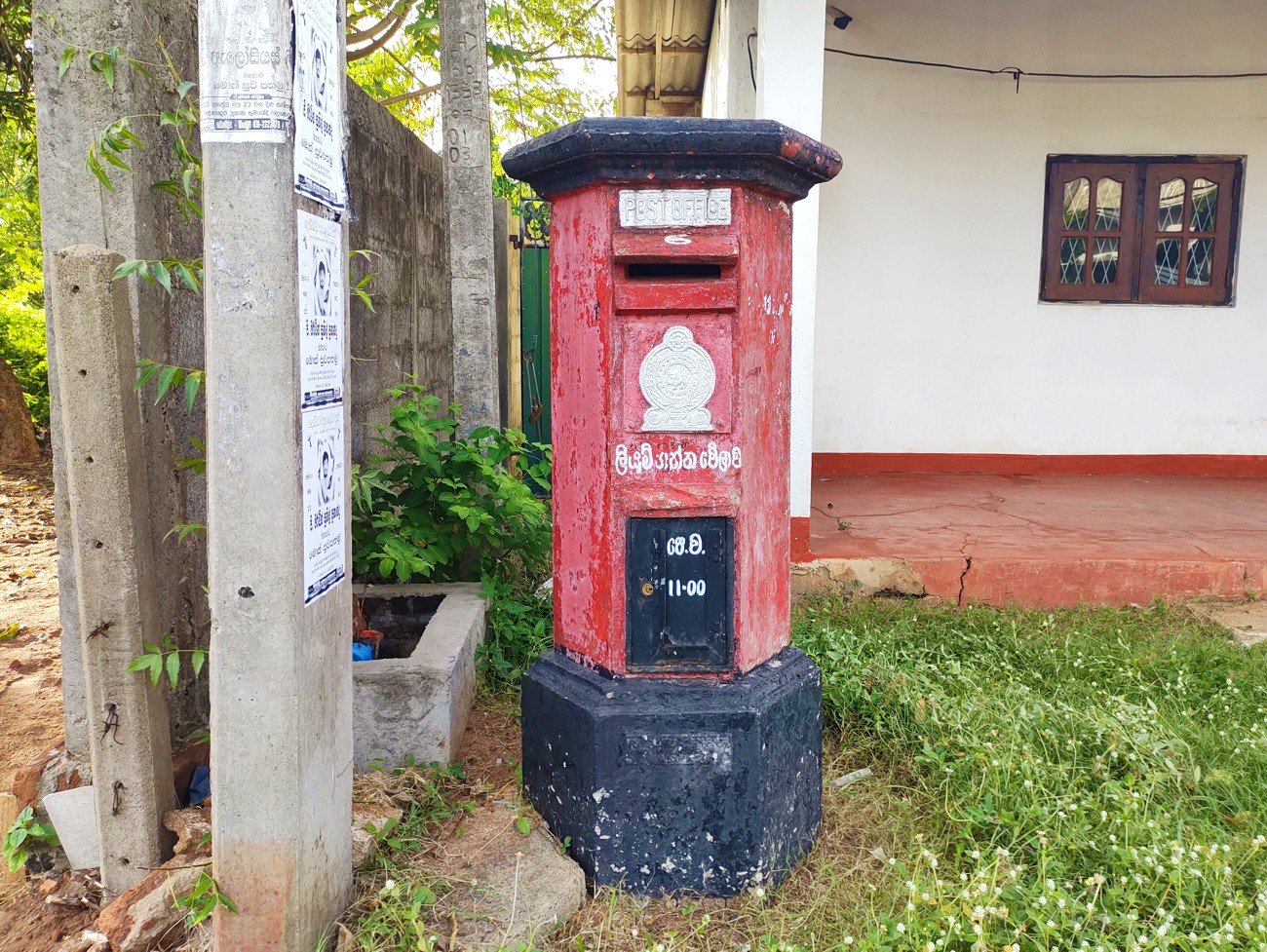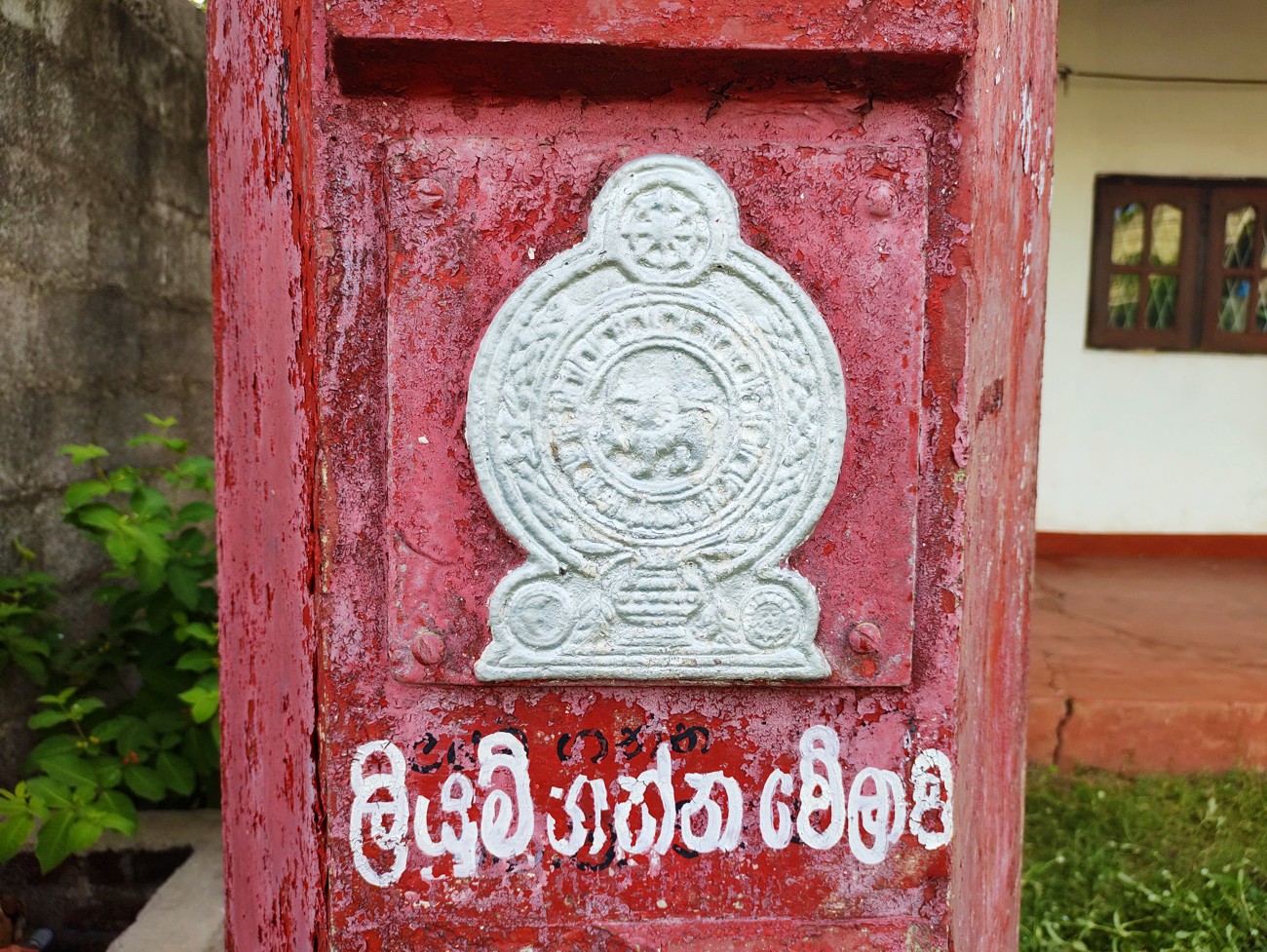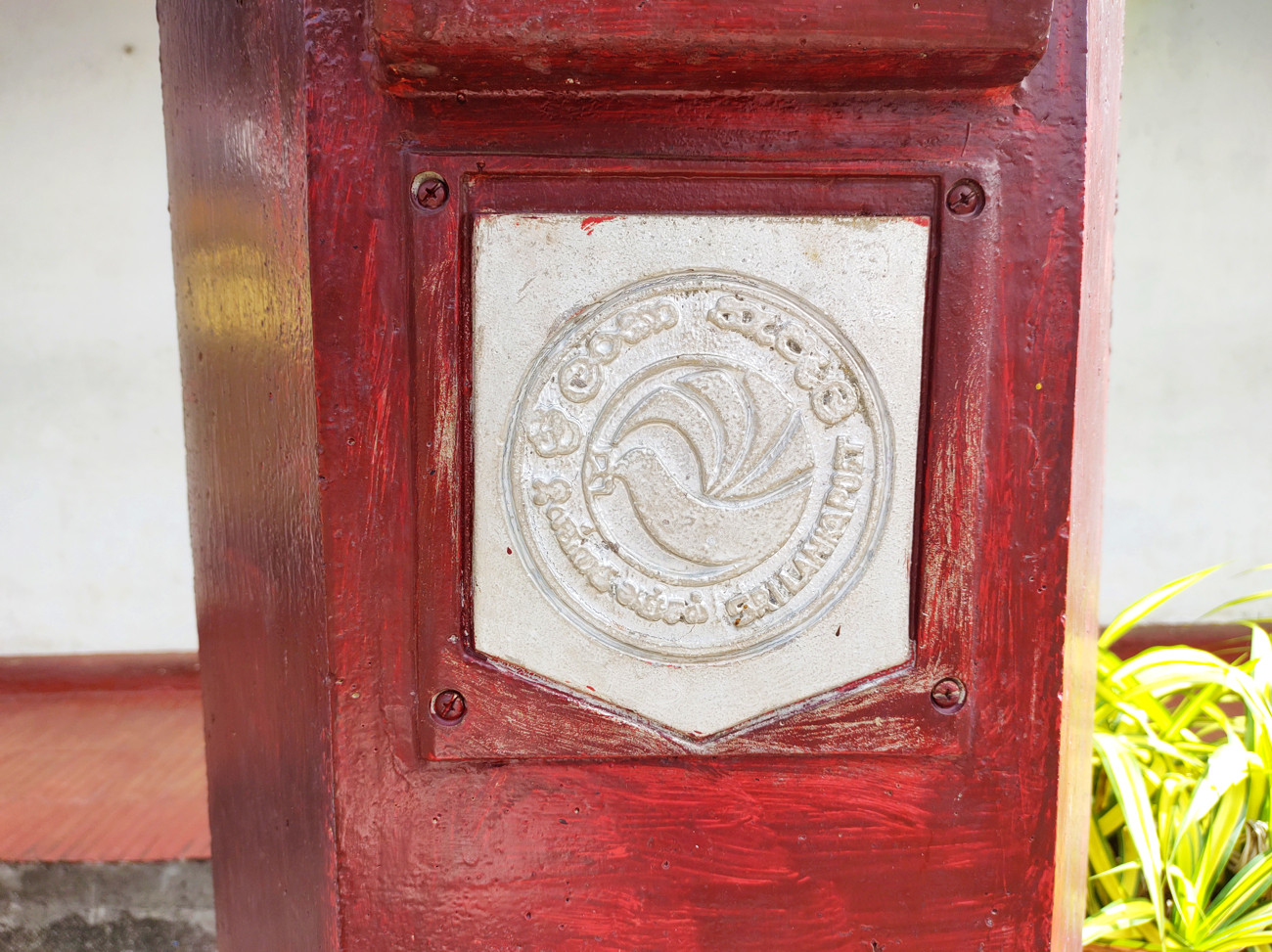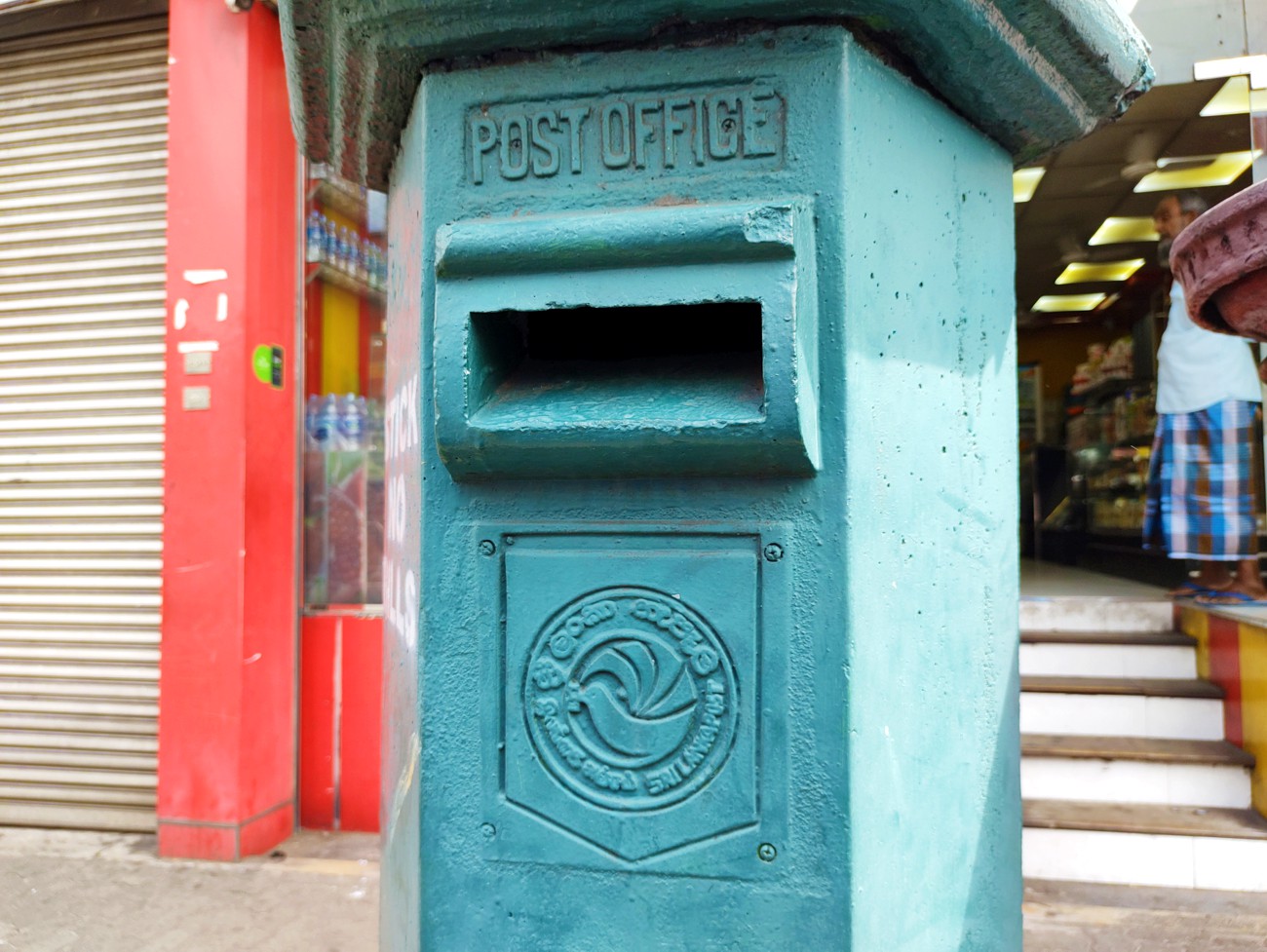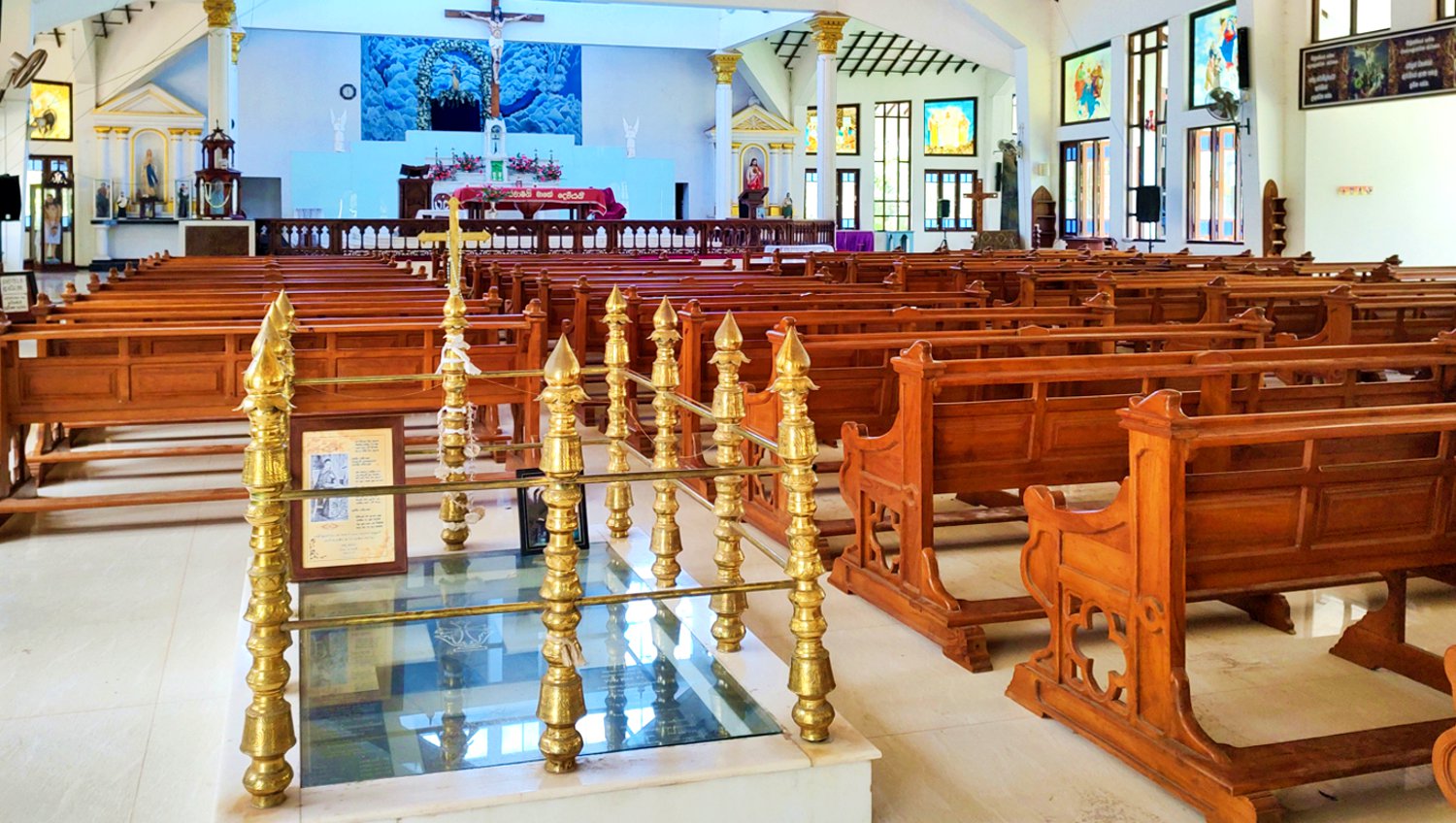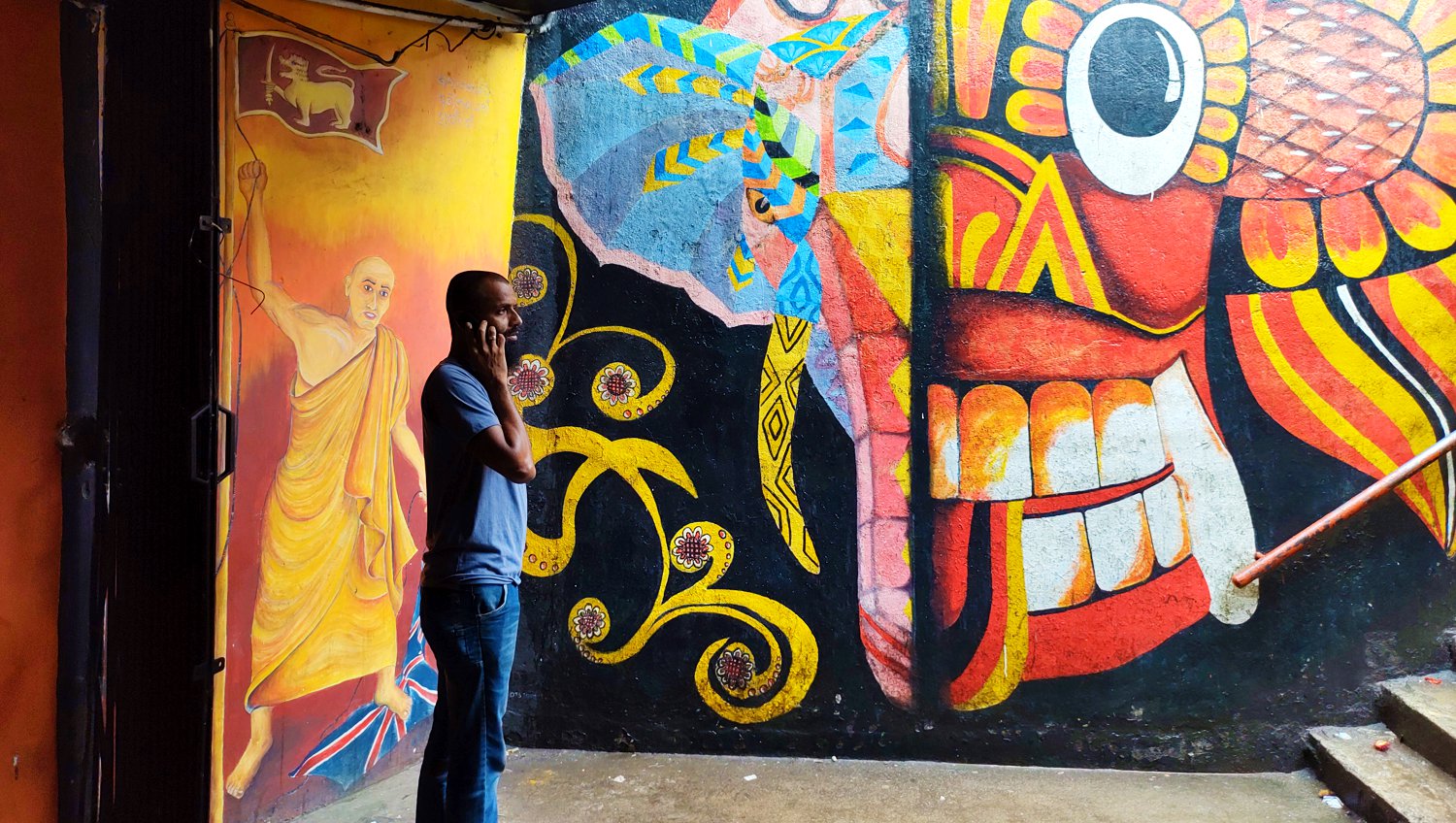On my first day in Colombo, my attention was captivated by two distinct postboxes that aroused my curiosity. One stood adorned in a verdant hue, displaying the emblem of Sri Lanka Post, while its scarlet counterpart showcased the letters “GR” accompanied by an elegant crown motif. As I continued down the street, another discovery awaited me: a postbox embellished with the entwined letters “GR” and “VI,” exuding a sense of regal artistry.
Traversing the landscapes of Sri Lanka on my bicycle, my eyes caught glimpses of numerous postboxes, each marked with these unique symbols. The allure of these distinctive markings prompted me to delve deeper, leading me to the internet in search of answers. What I discovered was something fascinating: these were, in fact, British Royal Cyphers meticulously embossed onto these postboxes, serving as a tangible link to history and heritage.
The origins of this historical connection hark back to the tumultuous period of the French Revolution wars, between 1792 and 1801. The British East India Company seized control of Sri Lanka, then known as Ceylon, from the Dutch, who had succumbed to French dominion. Seizing the opportunity, the British established dominion over the island, initially governing from Madras. The strategic significance of Ceylon prompted the establishment of enduring control, solidified in 1802 when the island became a crown colony. The Treaty of Amiens further cemented British sovereignty over maritime Ceylon.
For nearly a century and a half, Sri Lanka remained under the mantle of British rule, until the nation reclaimed its sovereignty on February 4, 1948. Throughout this epoch, eight monarchs graced the British throne, imprinting their reigns on history’s pages.
1. King George III (1760-1820)
2. King George IV (1820-1830)
3. King William IV (1830-1837)
4. Queen Victoria (1837-1901)
5. King Edward VII (1901-1910)
6. King George V (1910-1936)
7. King Edward VIII (1936) – He abdicated the throne and was succeeded by his brother.
8. King George VI (1936-1952)
A British Royal Cypher, also known as a royal monogram, weaves together the initials of a reigning monarch, creating an intricate emblem that signifies their authority. This emblematic design adorns official documents, government edifices, and military regalia, embodying the monarch’s presence in various realms. An emblematic crown frequently crowns these cyphers, each carrying its unique historical resonance. Notably, the ‘R’ within these designs harks back to Latin origins, representing either ‘Rex’ or ‘Regina’ – the regal terms for King and Queen.
The elegance of these symbols is showcased in the cyphers of current and past monarchs. The monogram of King Charles III features the letters “C” and “R” along with the Roman numeral III. Similarly, Queen Elizabeth II’s cypher features the letters “E” and “R” with the Roman numeral II. The crown above each cypher reflects historical lineage: the crown above Queen Elizabeth II’s cypher signifies that of St. Edward, while the one above King Charles III’s cypher represents the Tudor Crown.
As I embarked on my departure from Sri Lanka after a two-month cycling adventure, the parting glimpse of a royal cypher etched into a postbox at Colombo’s airport lingered in my mind. This particular emblem bore the insignia of King Edward VII, a tangible link to a bygone era.
In a world captivated by digitization and instant communication, the iconic postboxes that once bore witness to penned histories are now fading into obscurity. The allure of sending emails and WhatsApp messages has ushered in a new era, rendering these vestiges of communication history obsolete. Yet, for those with an eye for the past and a penchant for uncovering the layers of history, these royal cyphers continue to stand as a bridge between the present and the resplendent tapestries of time. So, the next time you find yourself in Sri Lanka or other nations touched by British heritage, keep an eye out for these fascinating royal cyphers. You never know where you might spot one!
Read more:
Spotting a Royal Cypher
https://www.postalmuseum.org/blog/royal-cypher-appearances/
King Charles: New royal cypher revealed
https://www.bbc.com/news/uk-63034255
King Charles III reveals royal monogram topped with Tudor Crown
https://www.dezeen.com/2022/09/27/king-charles-iii-royal-cypher-monogram-logo/
Postboxes with Royal Cyphers on them:
Postboxes at Sangaman Kanda – the Eastern most point and Dondra Head – Southern most point of Sri Lanka
Postboxes with Sri Lanka Post symbol

